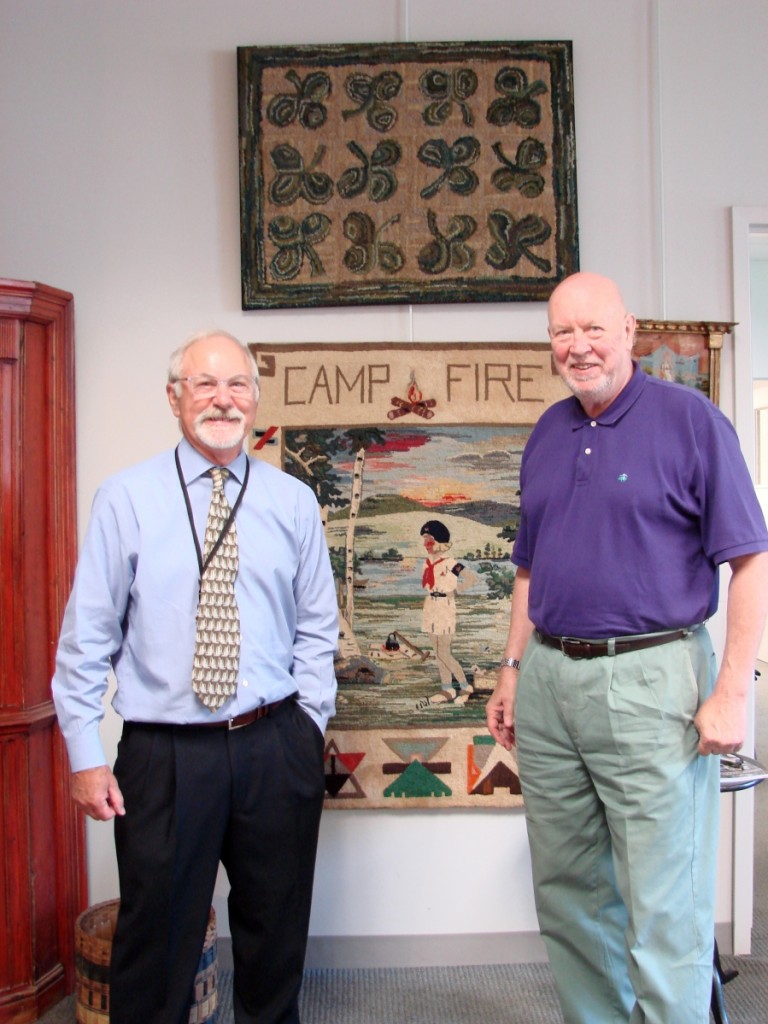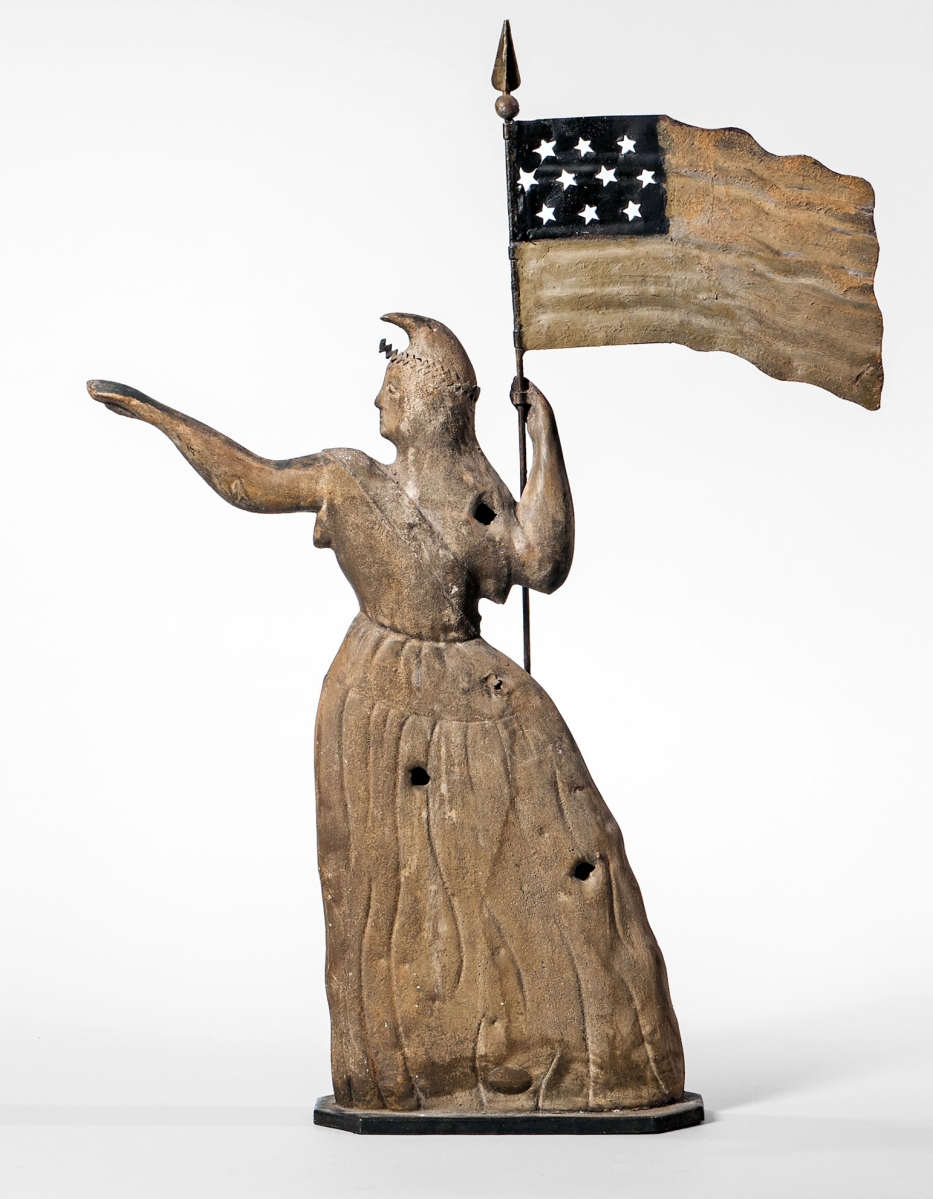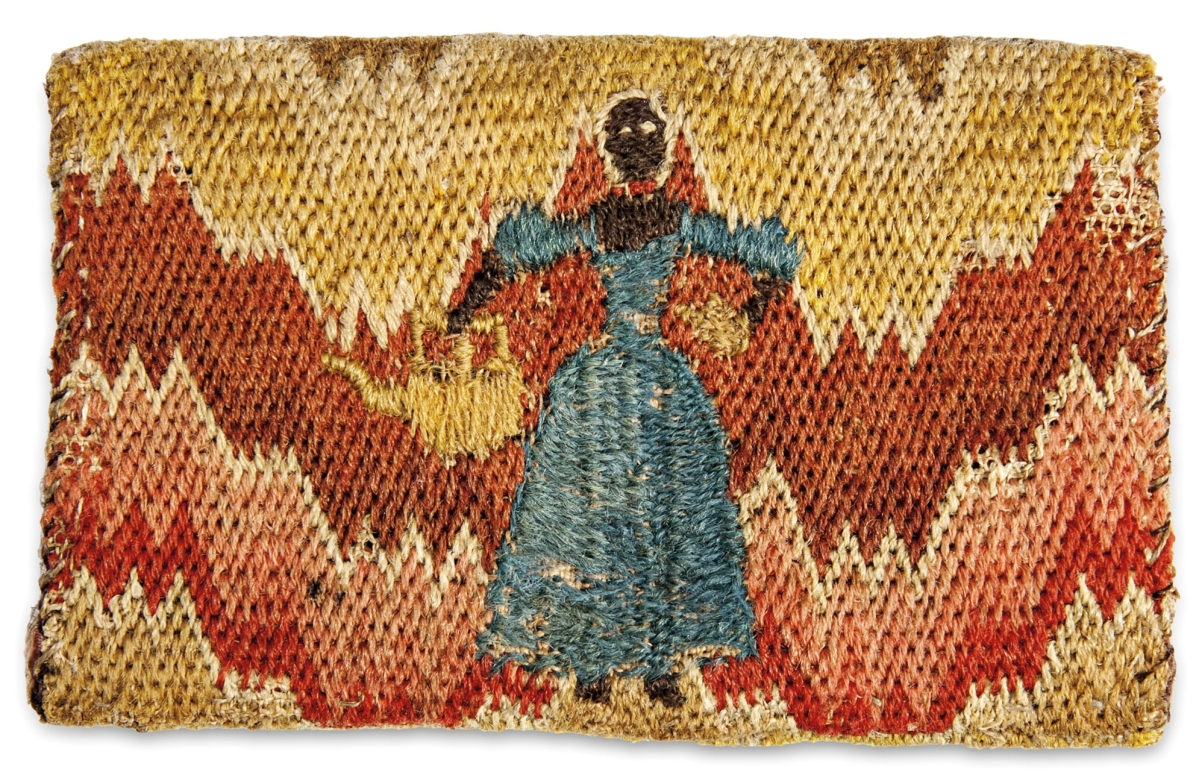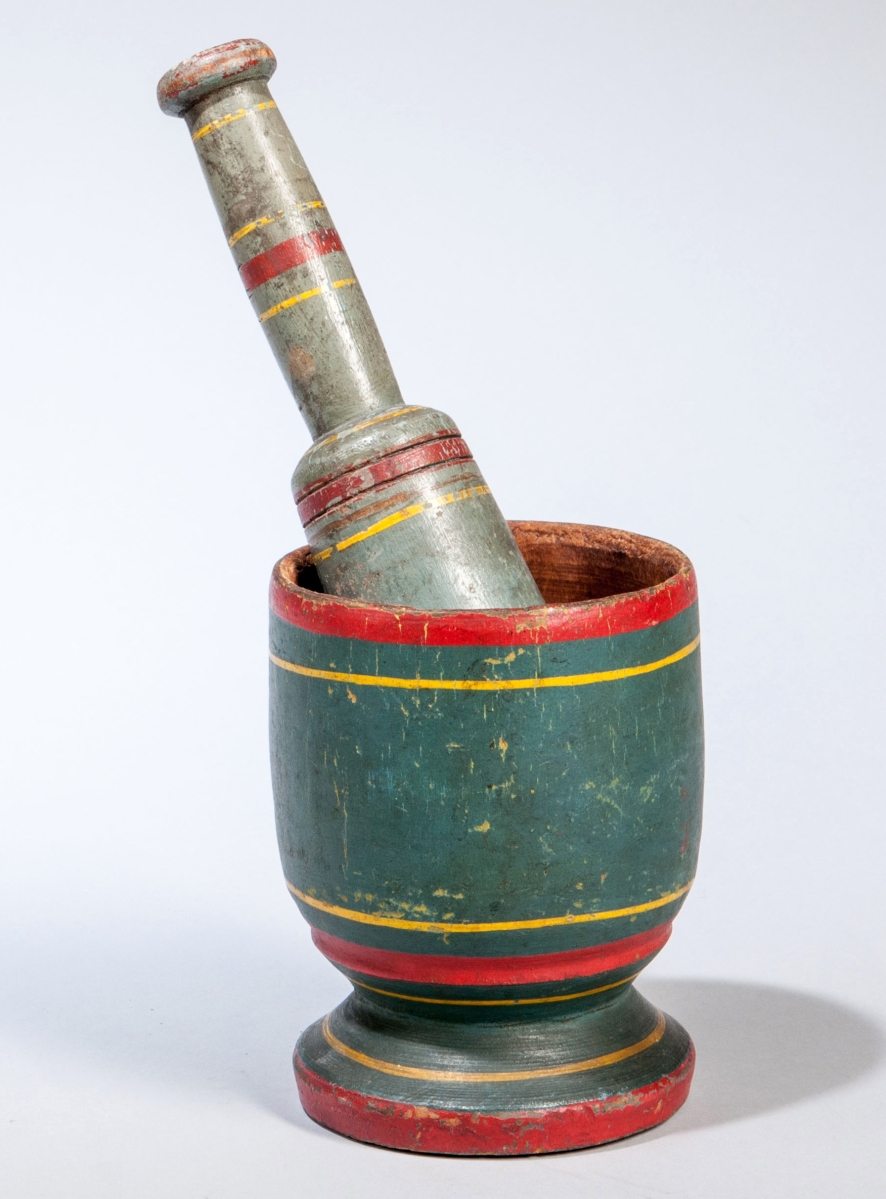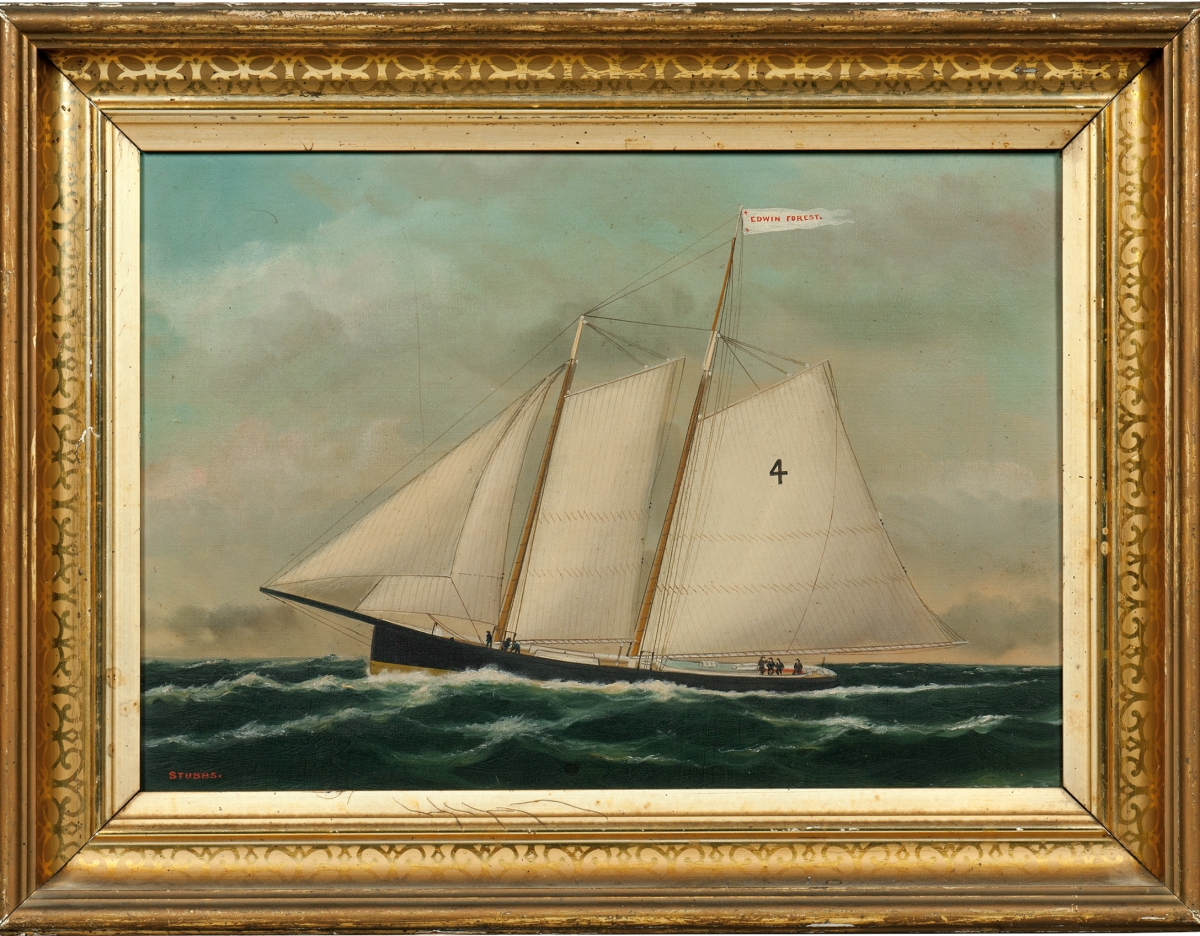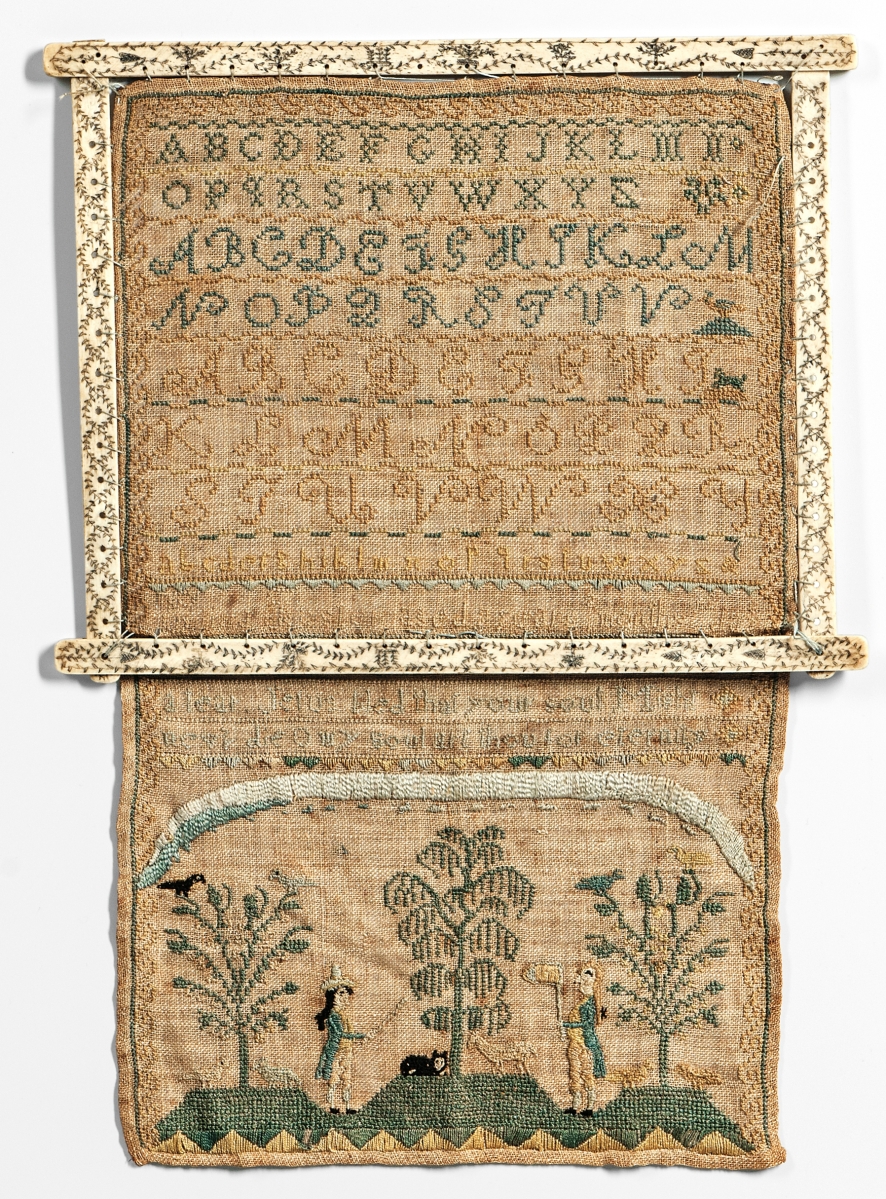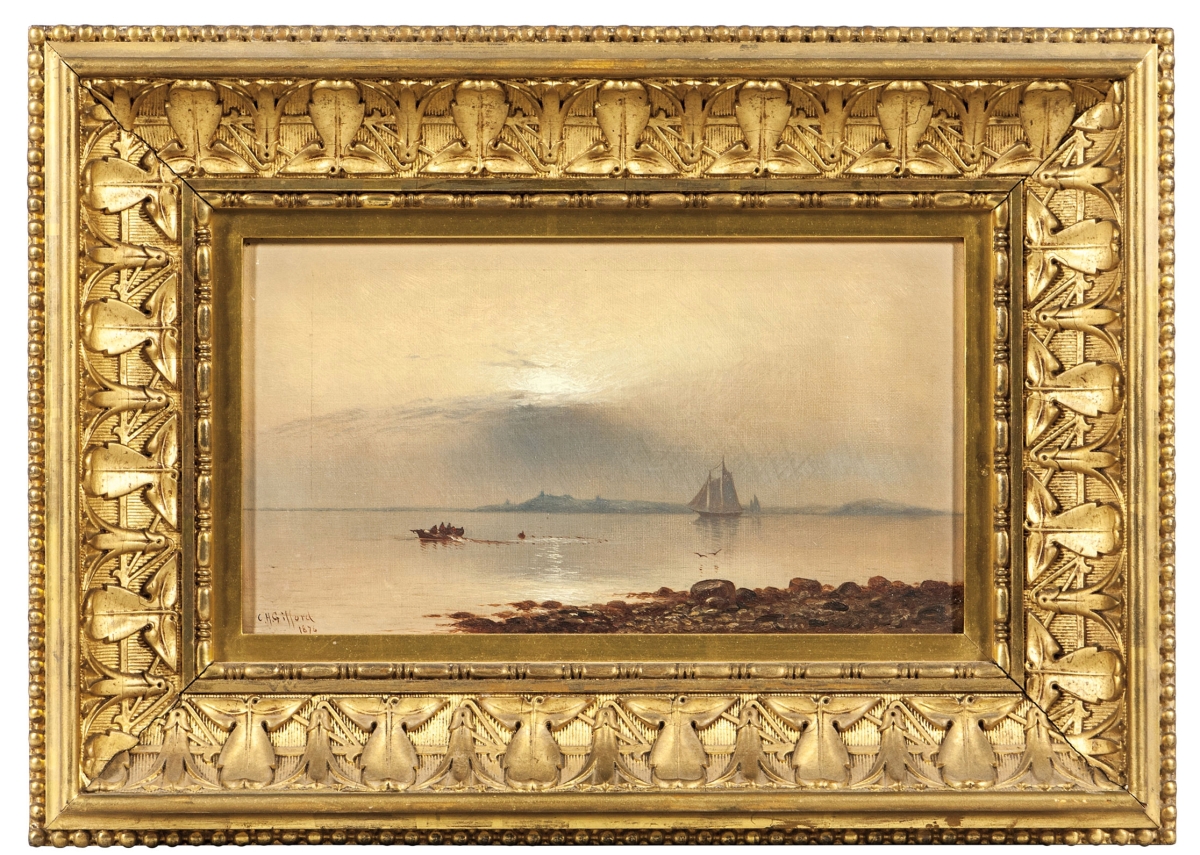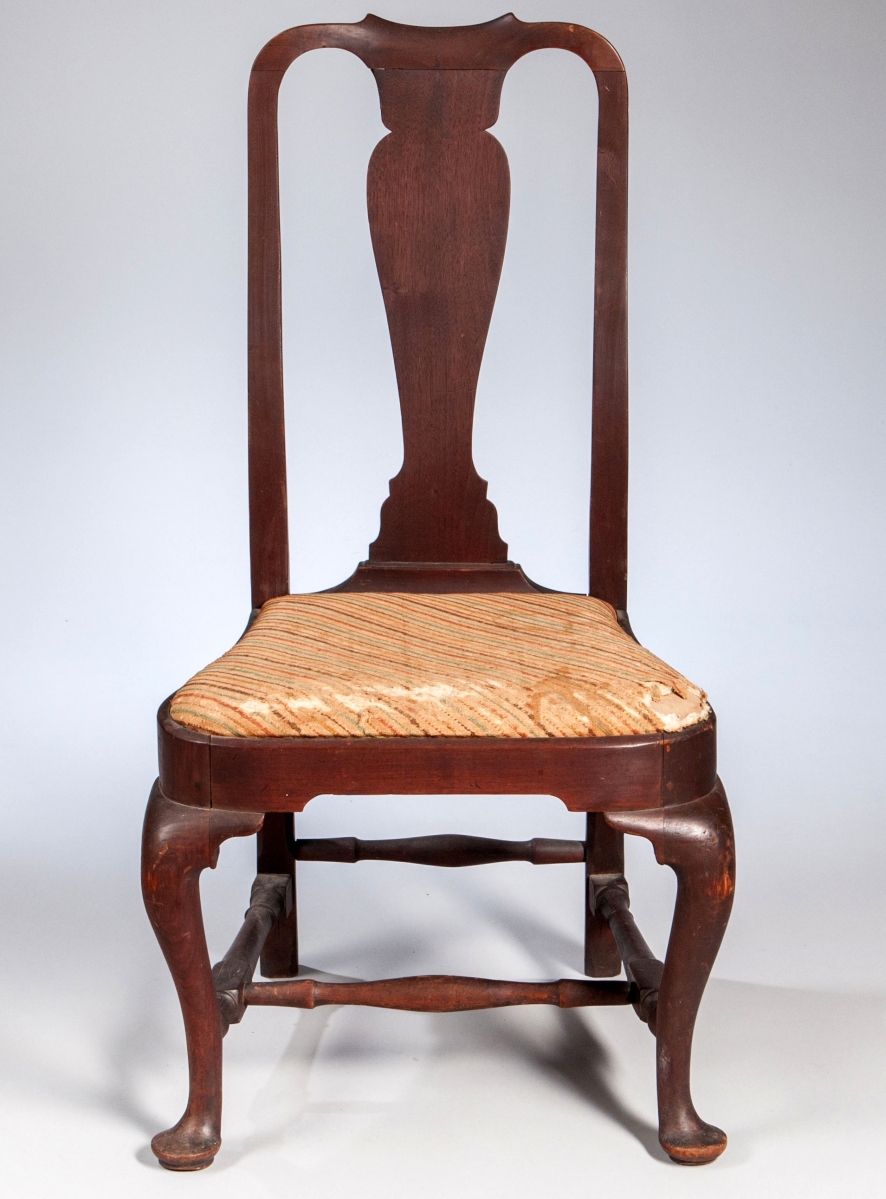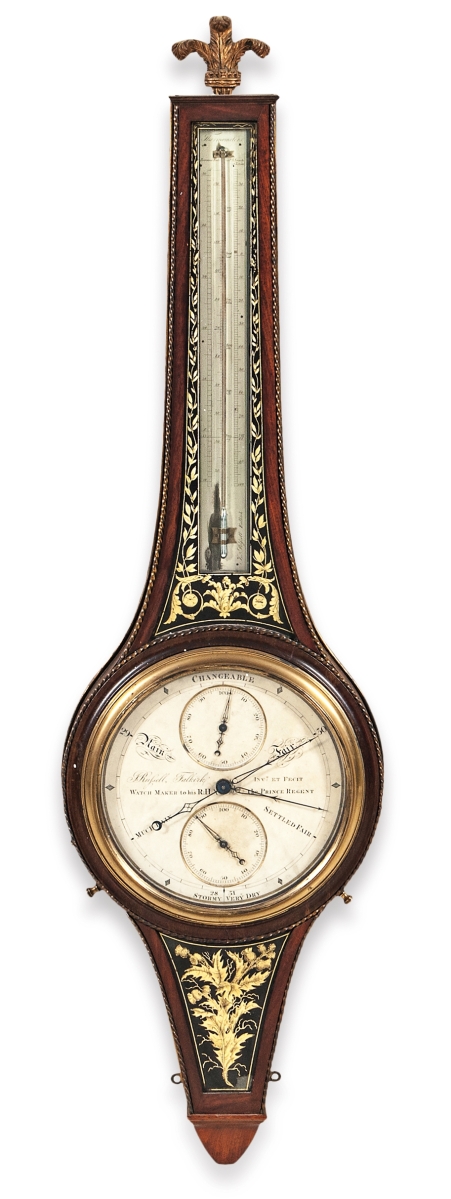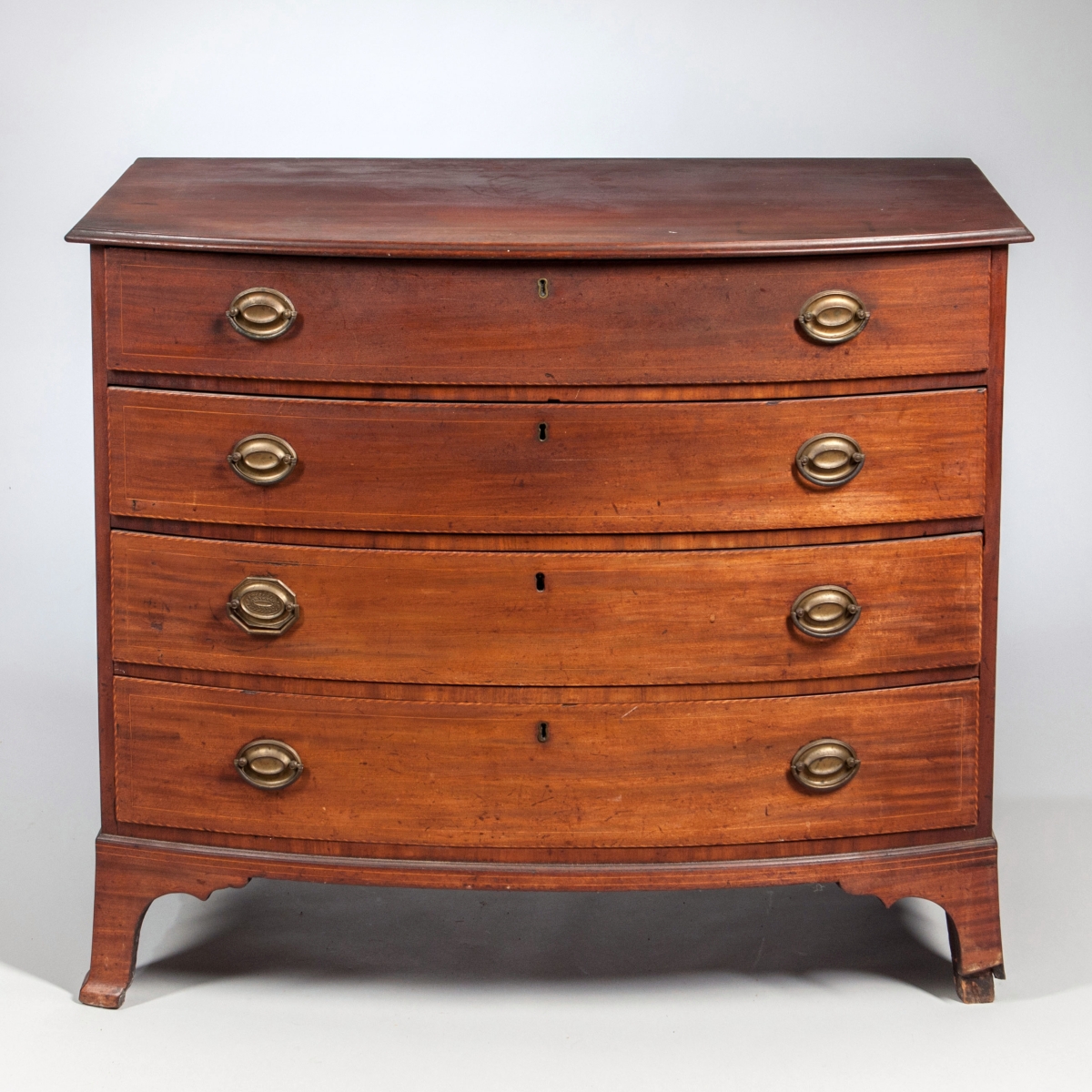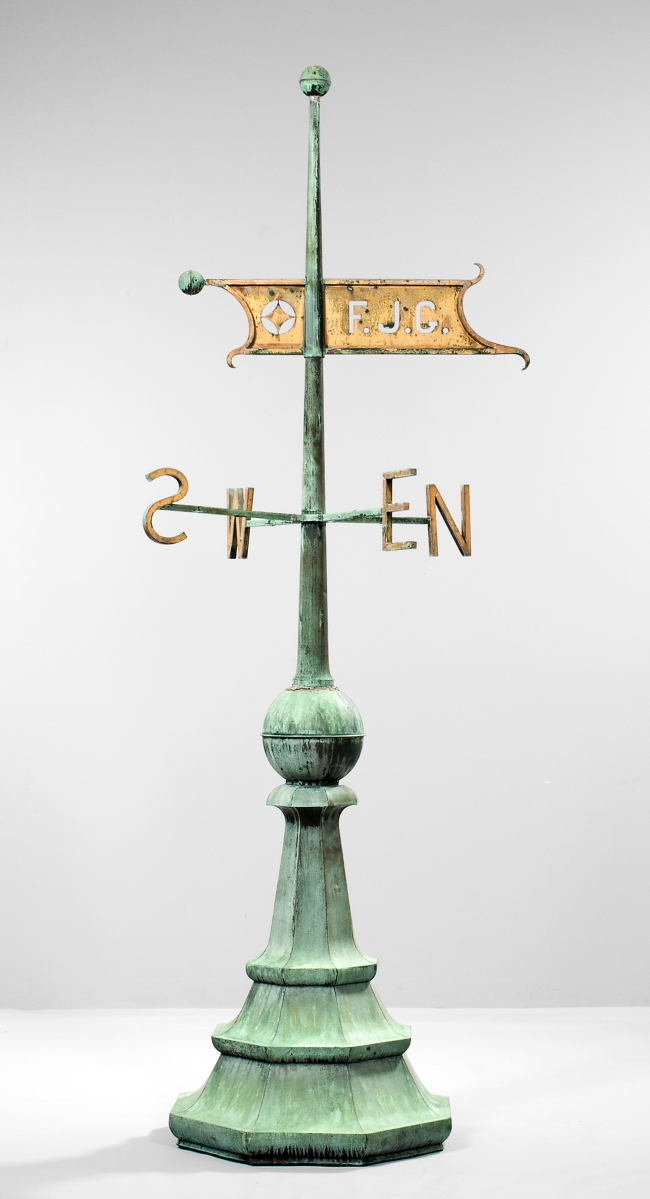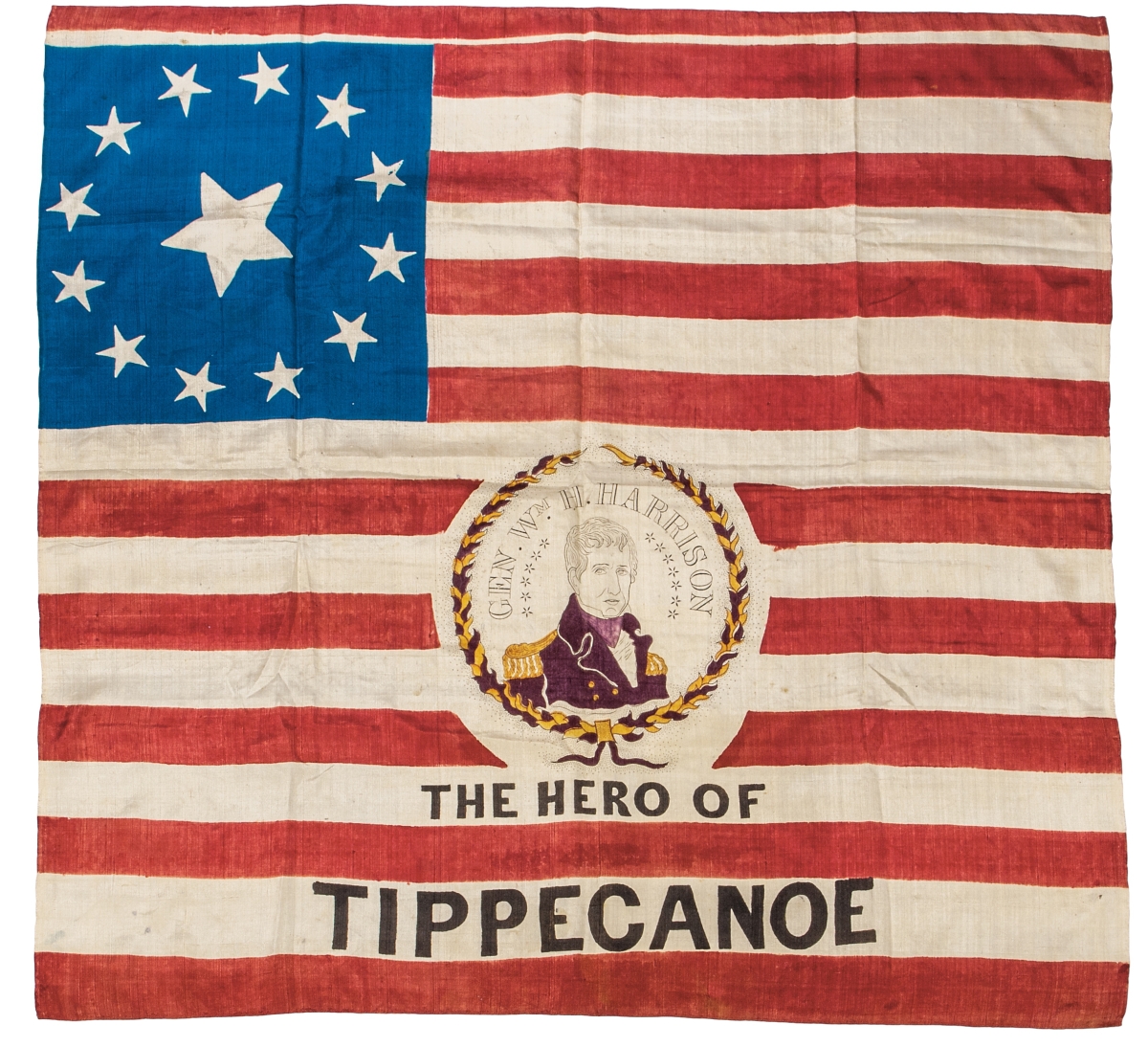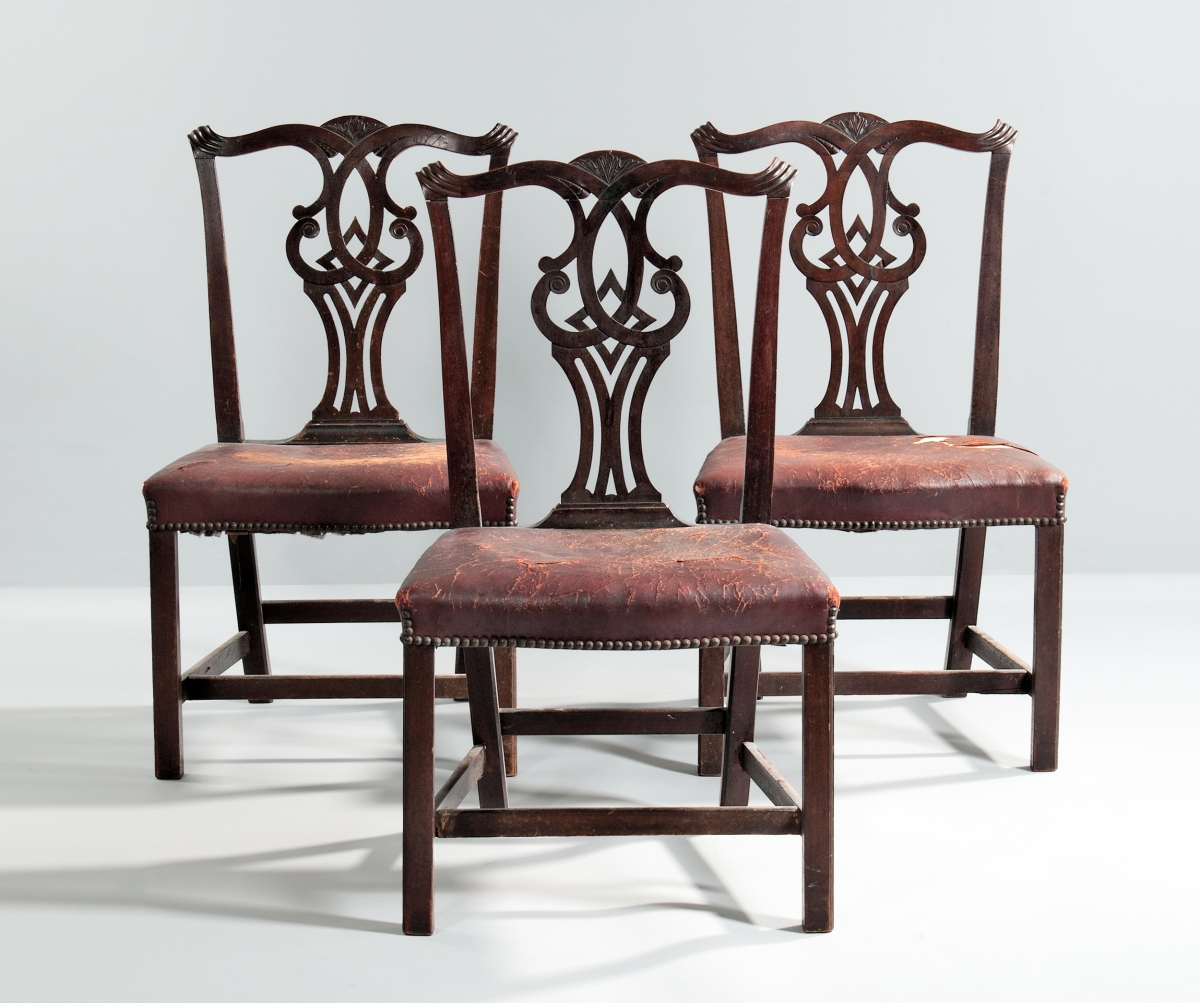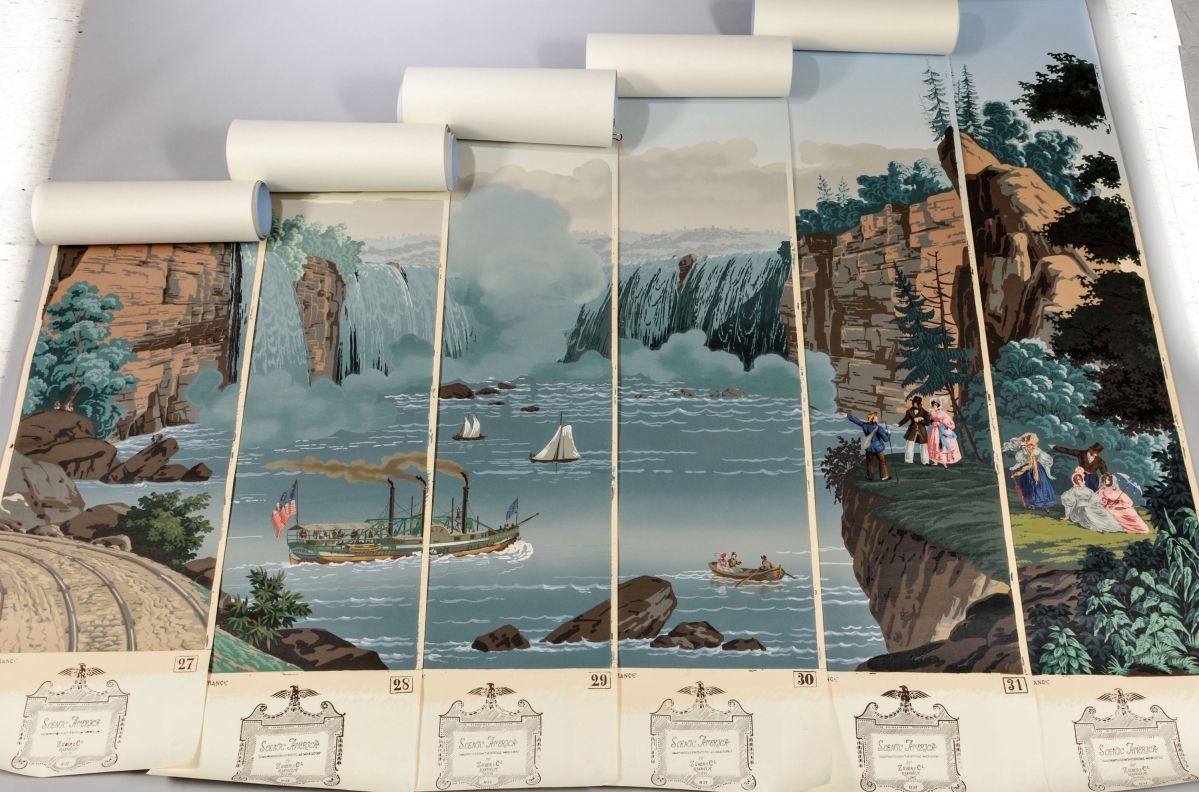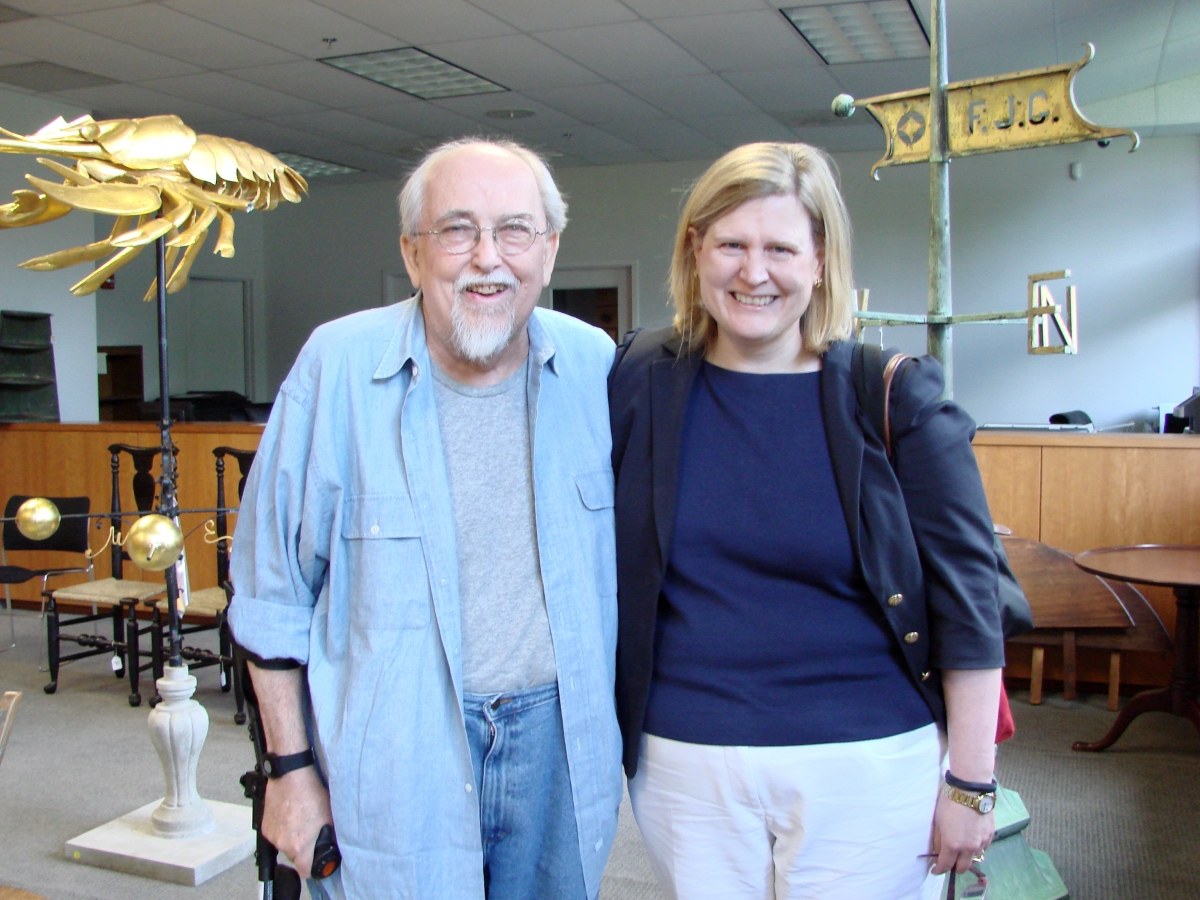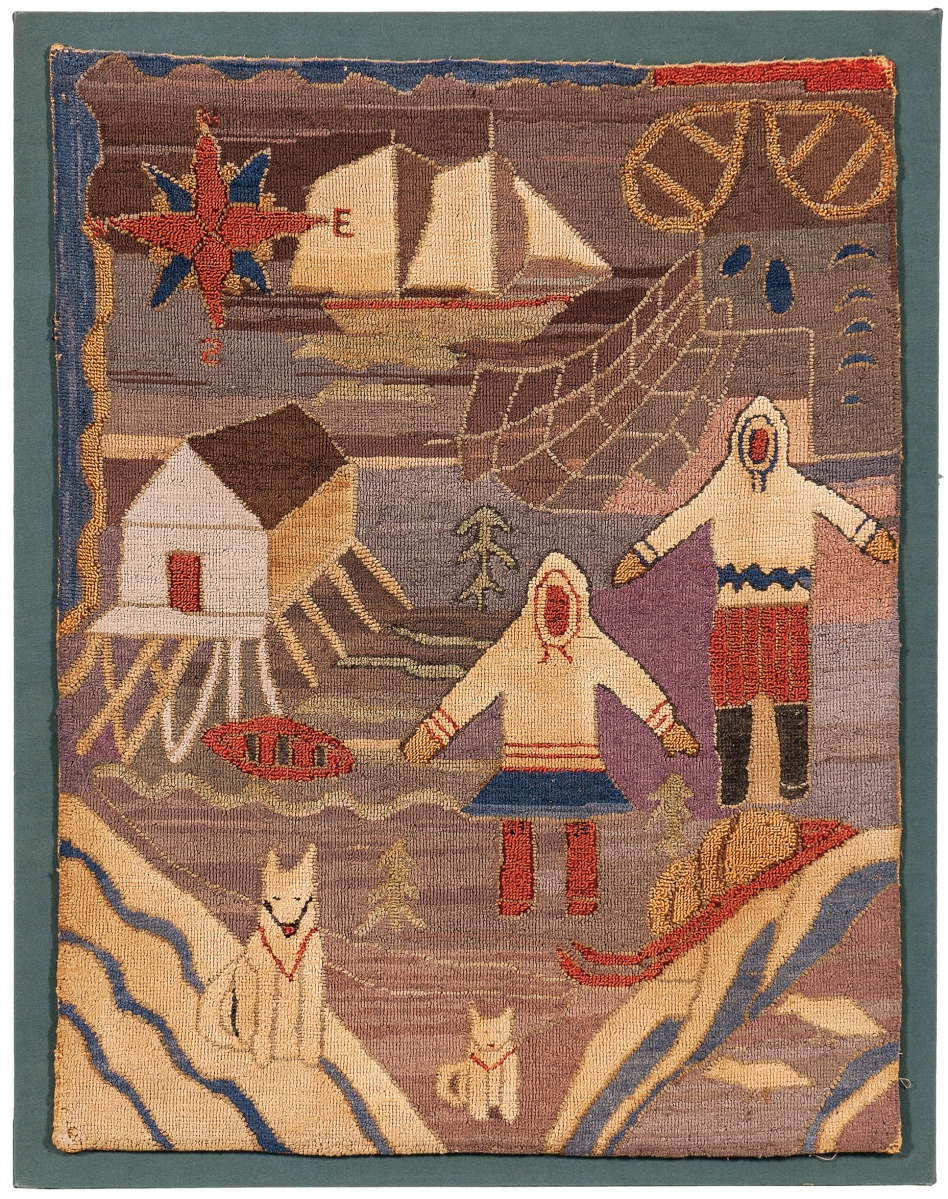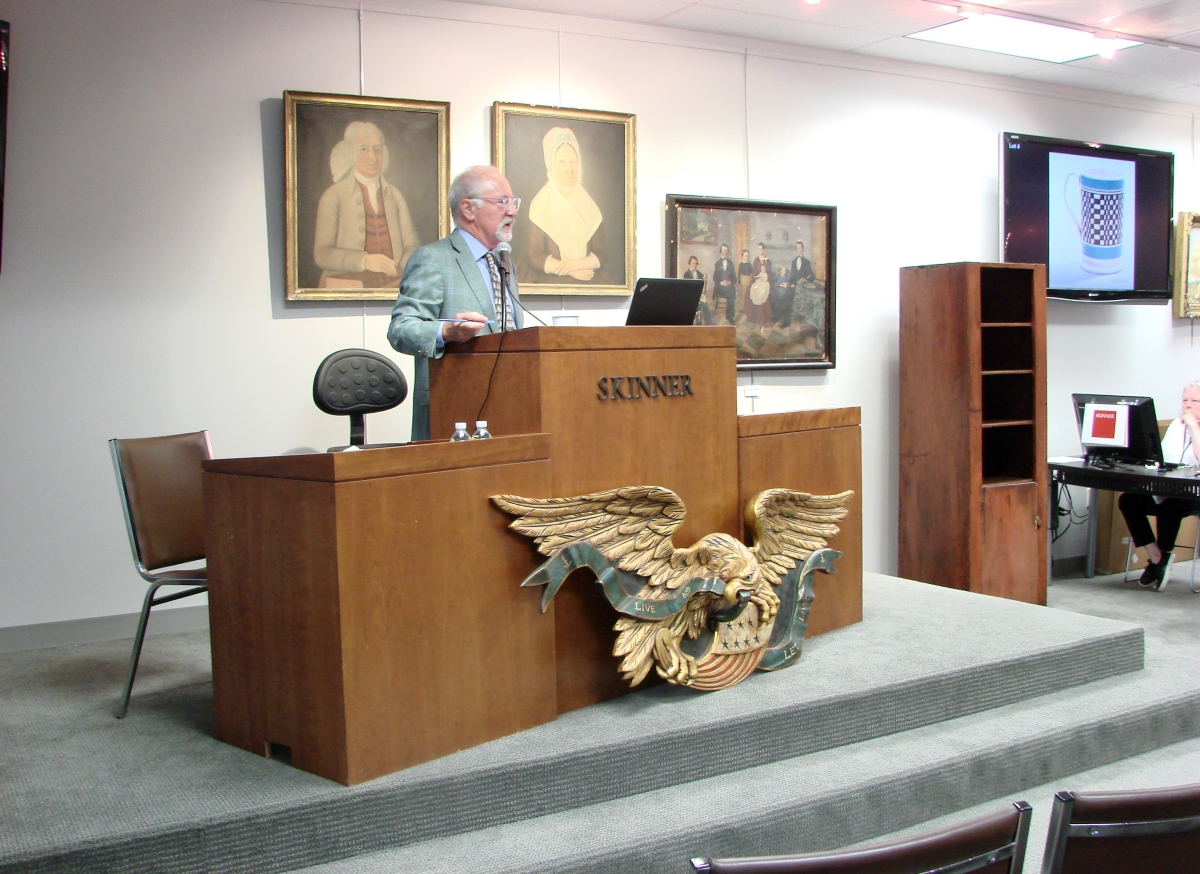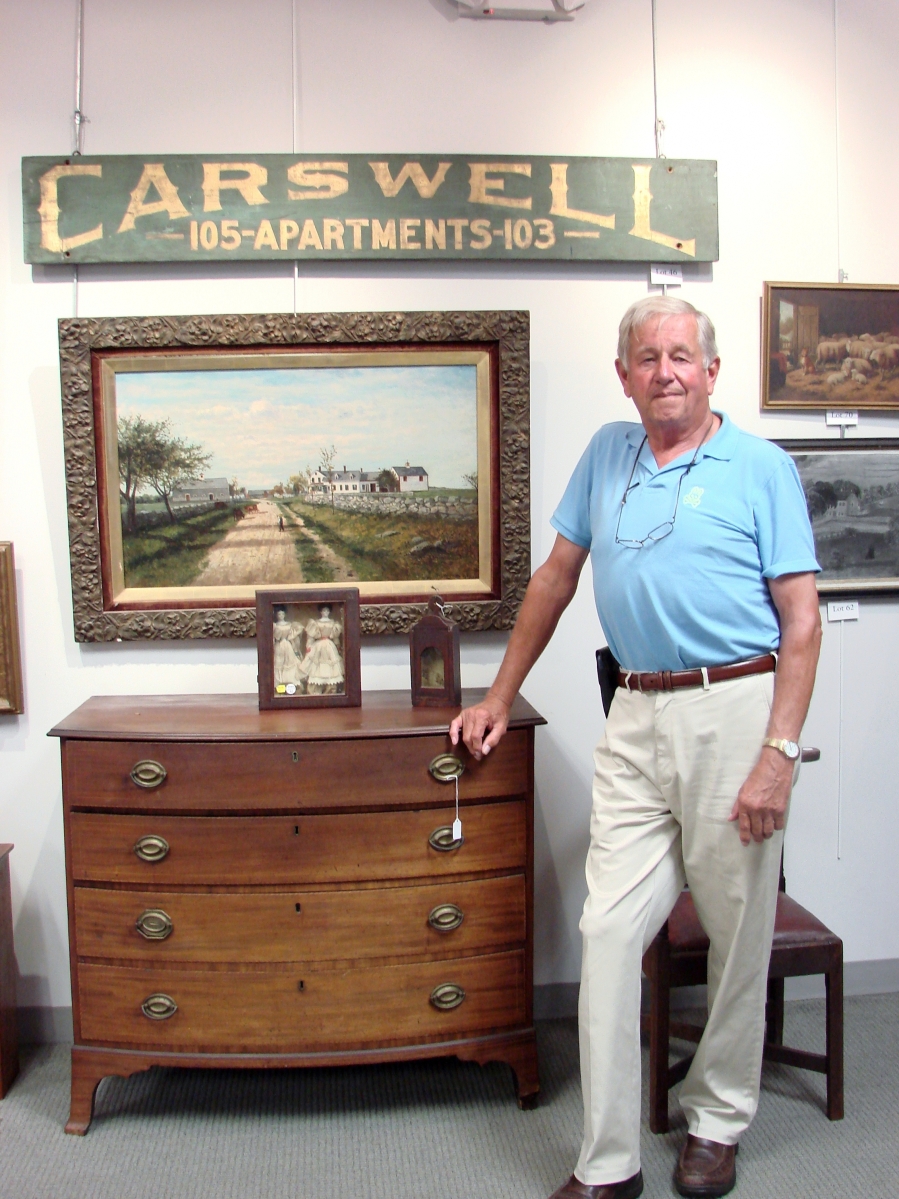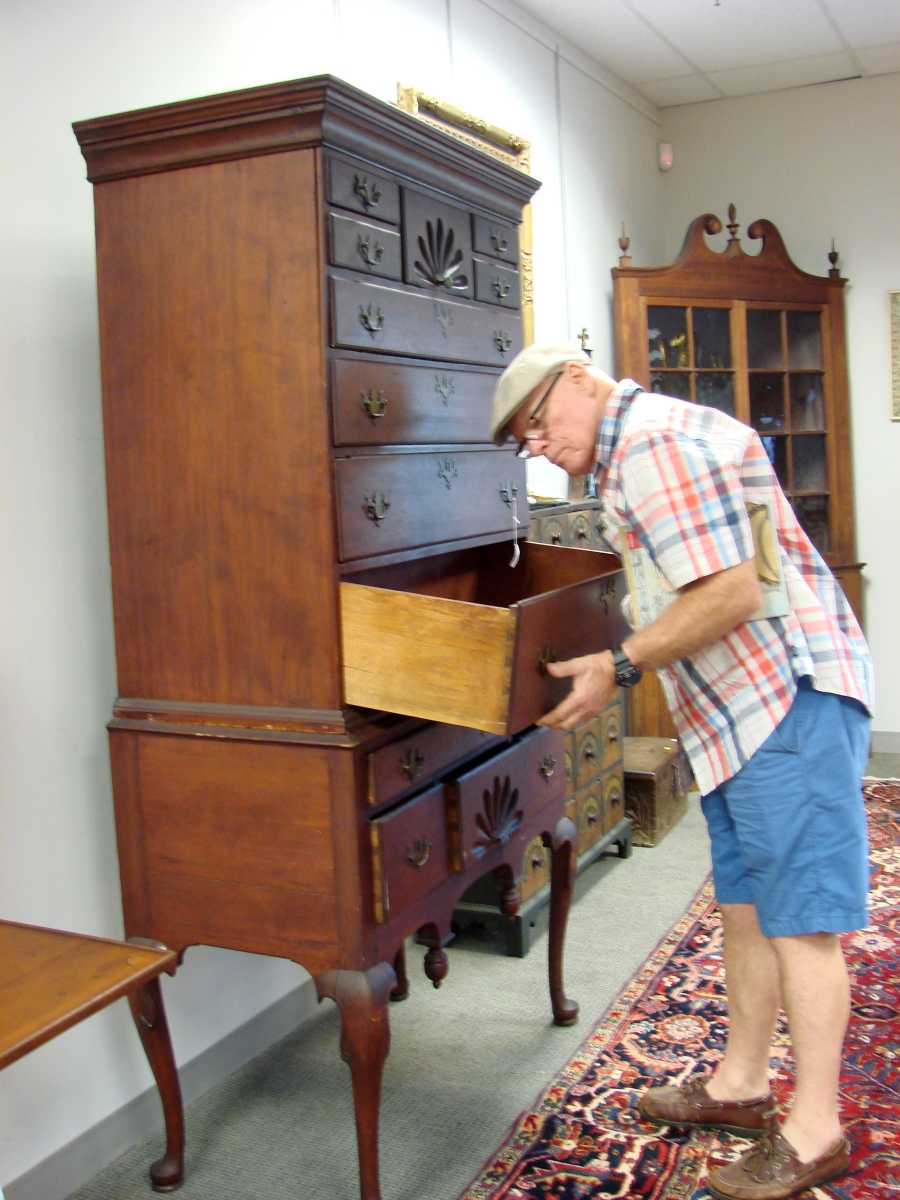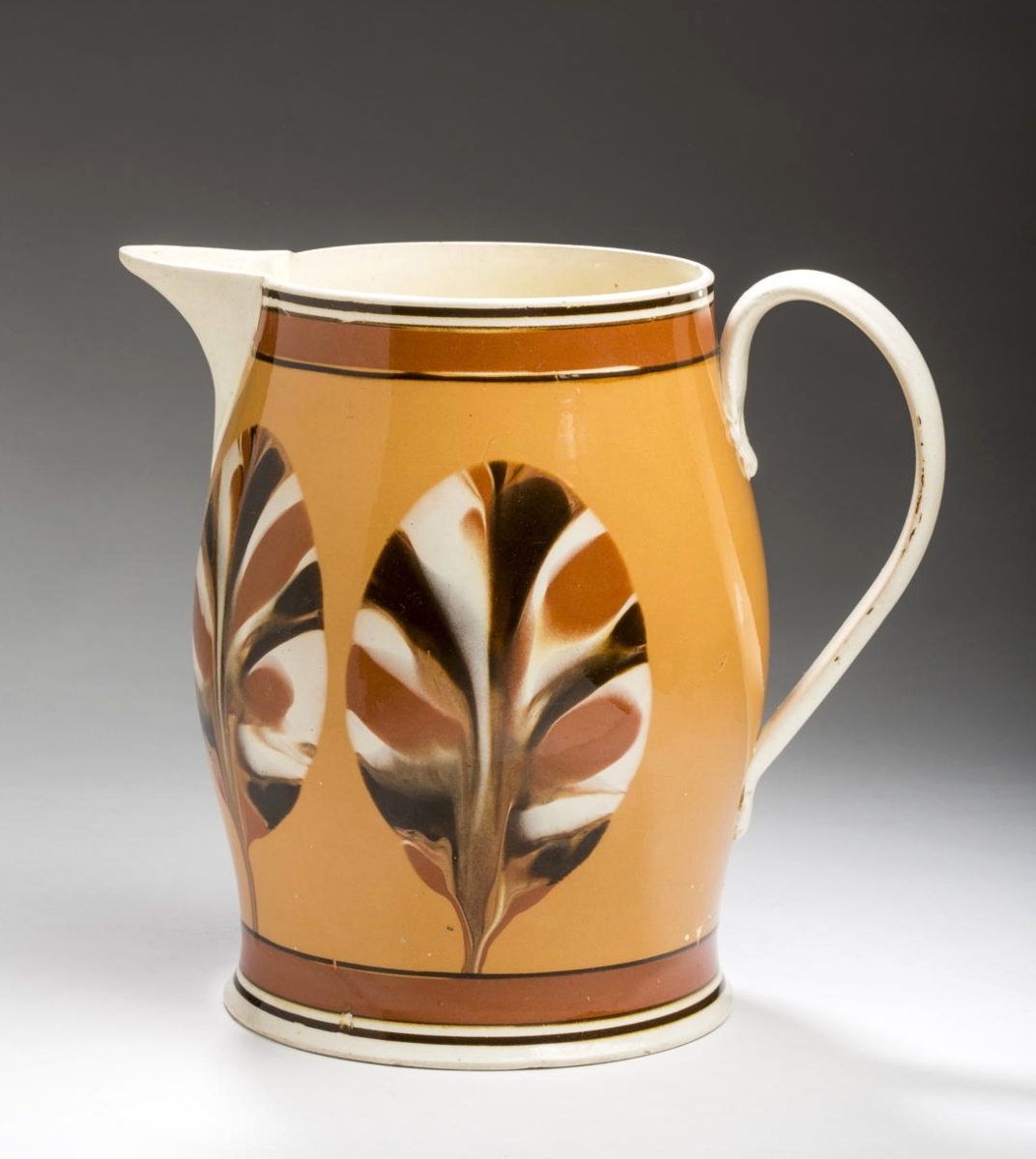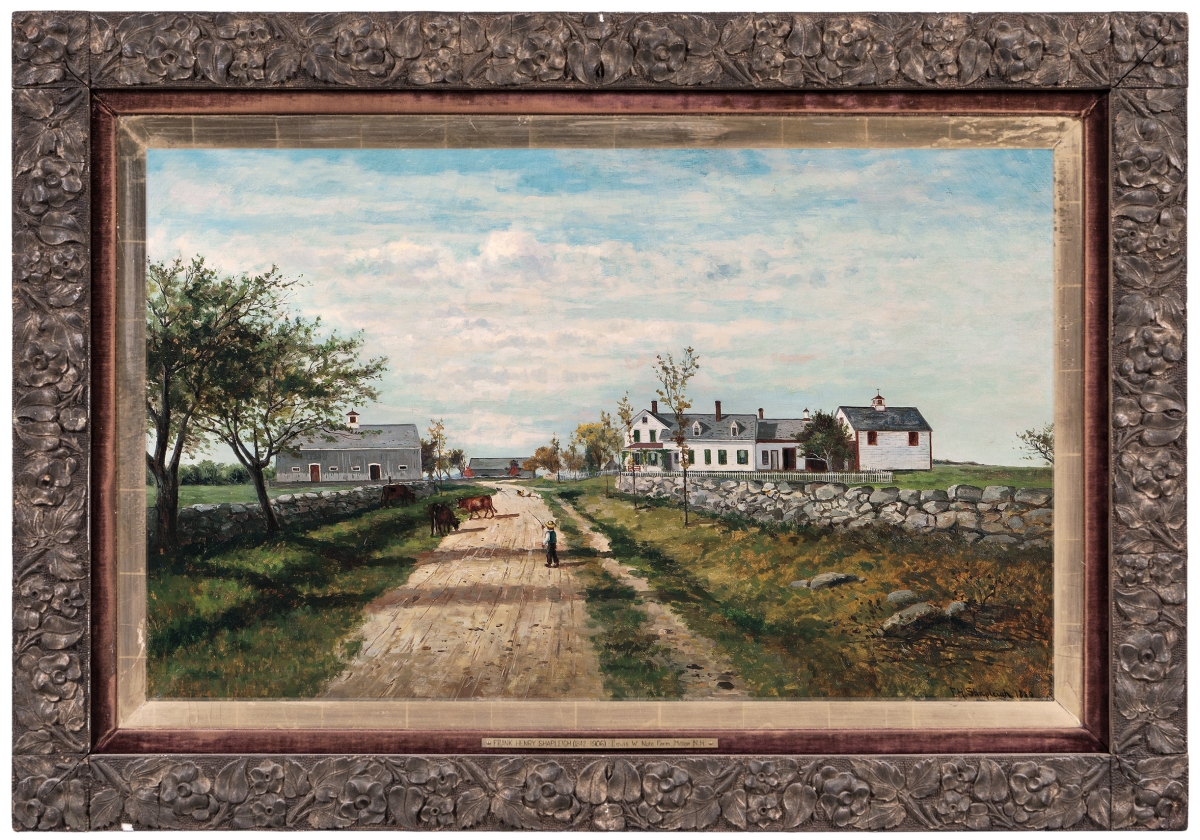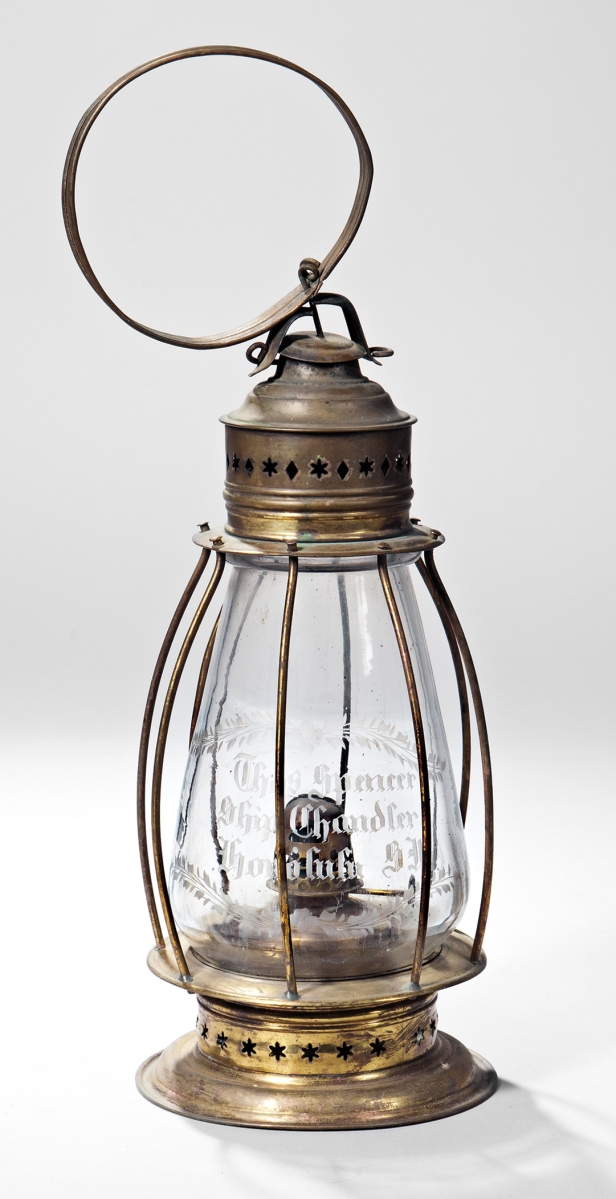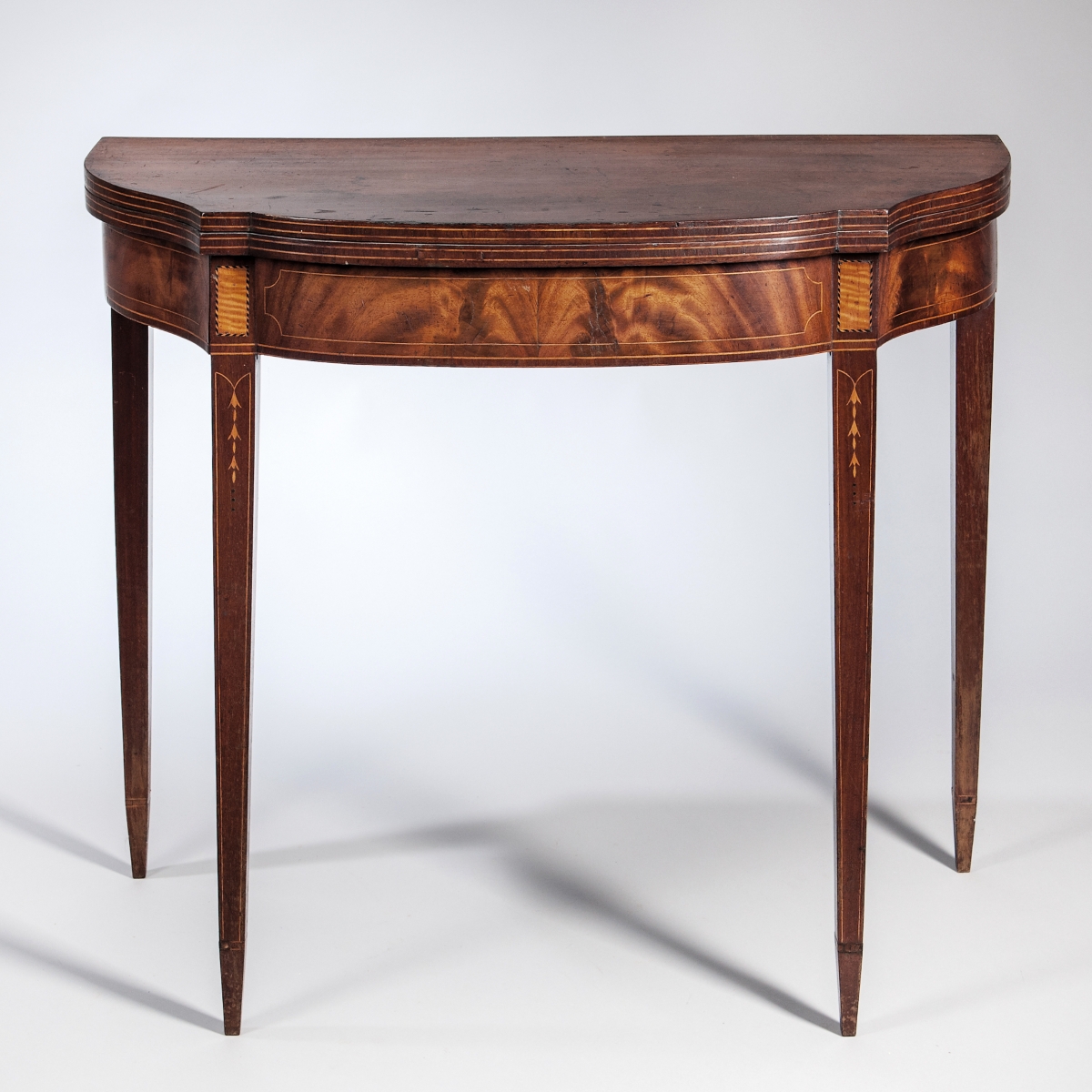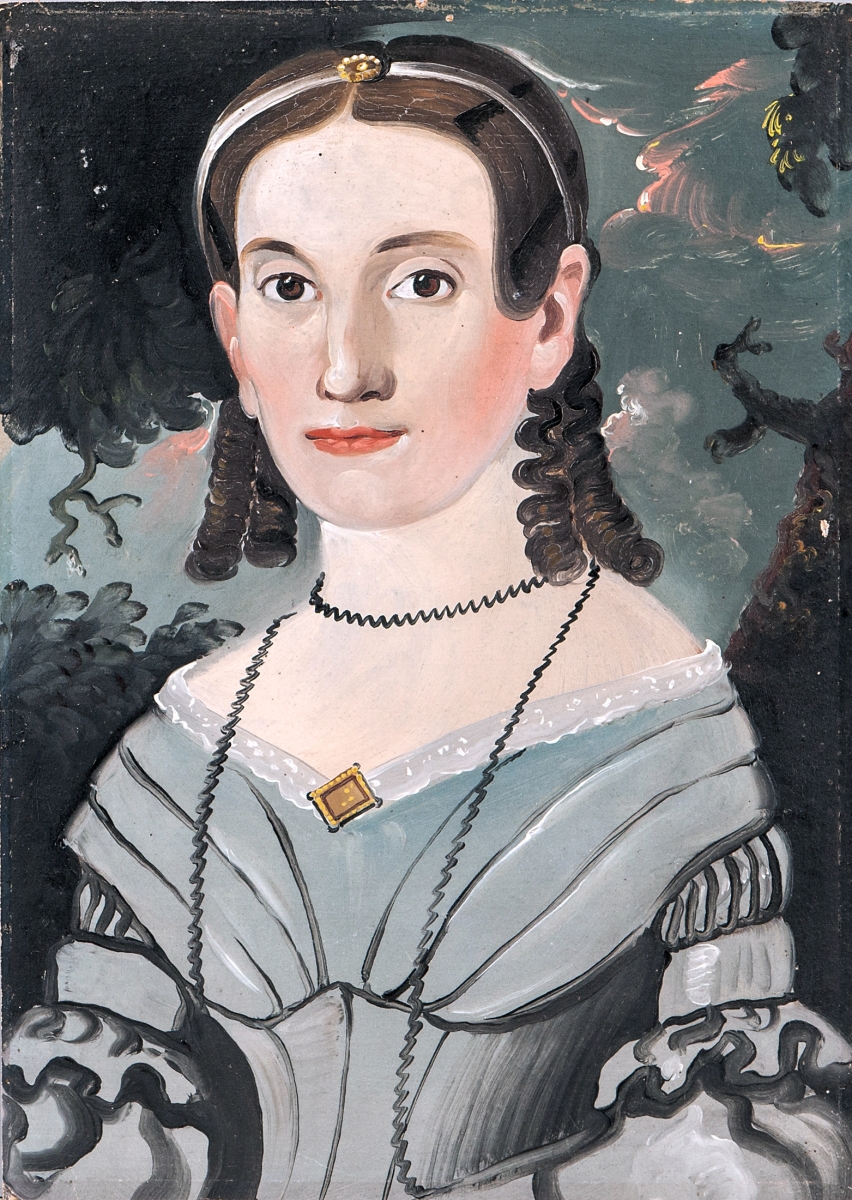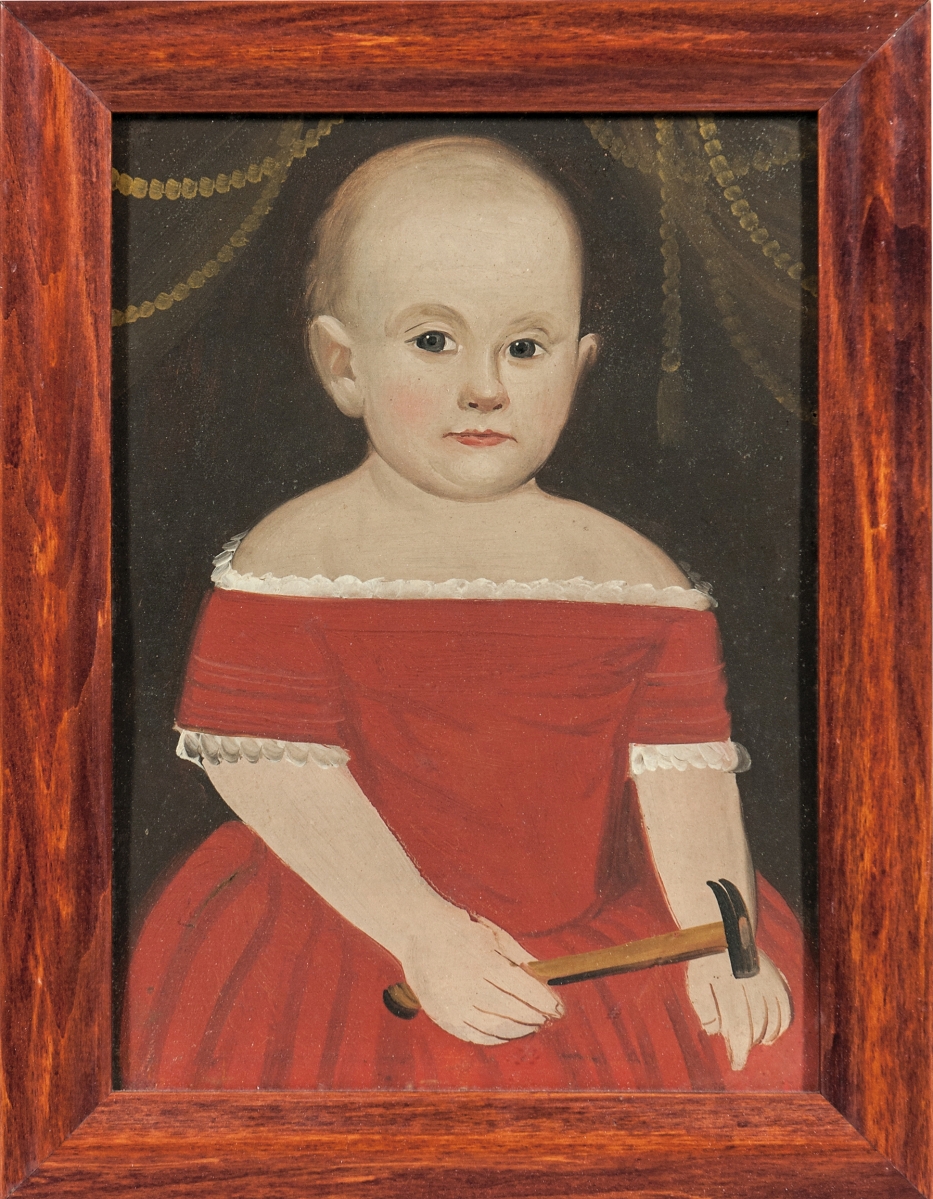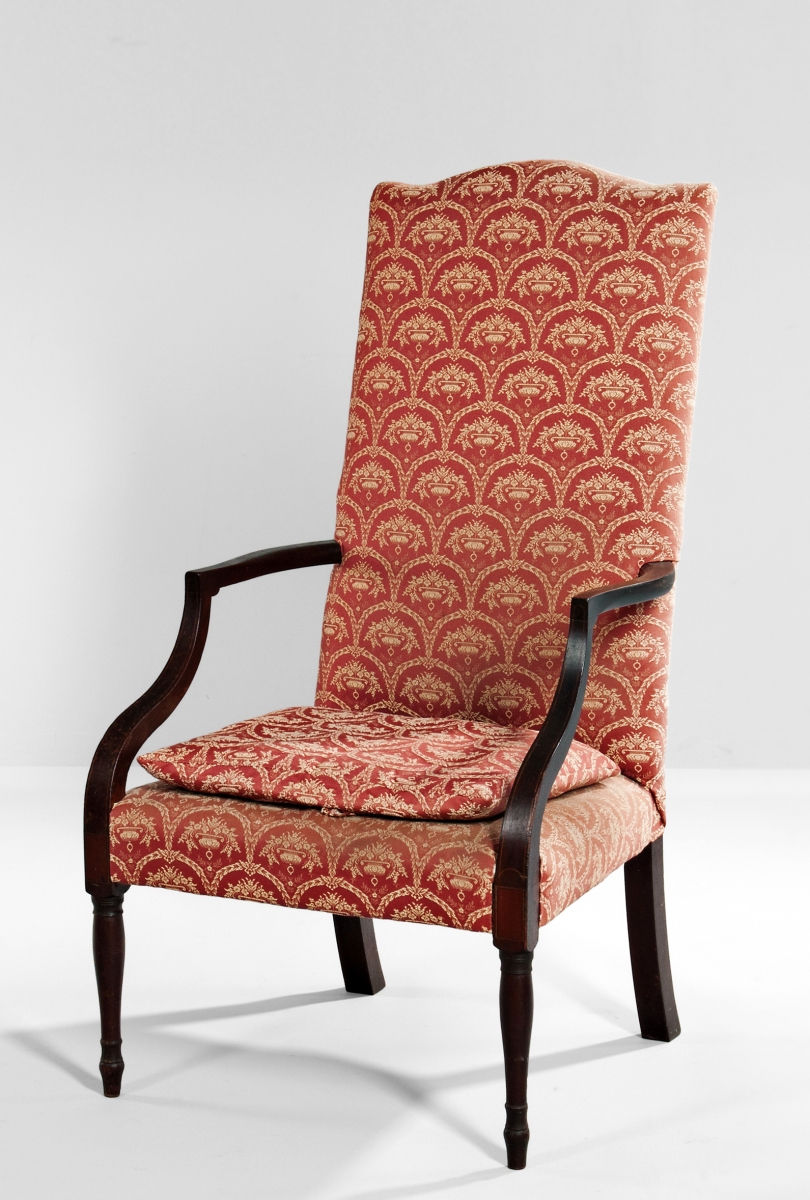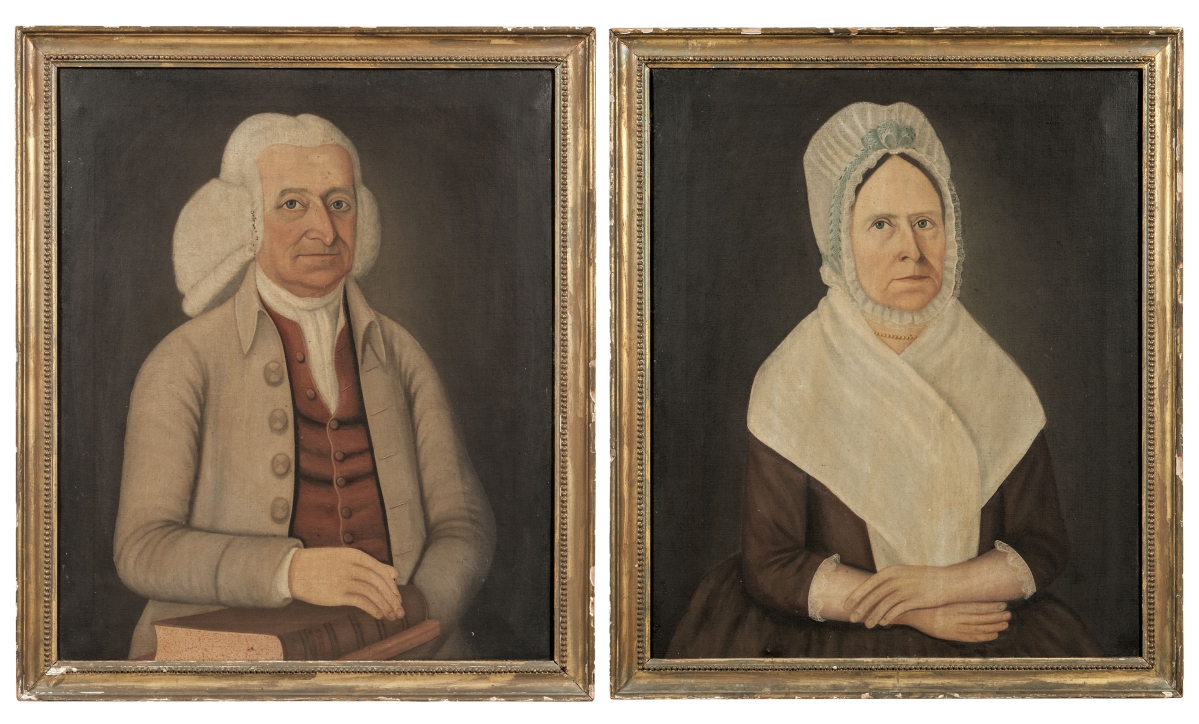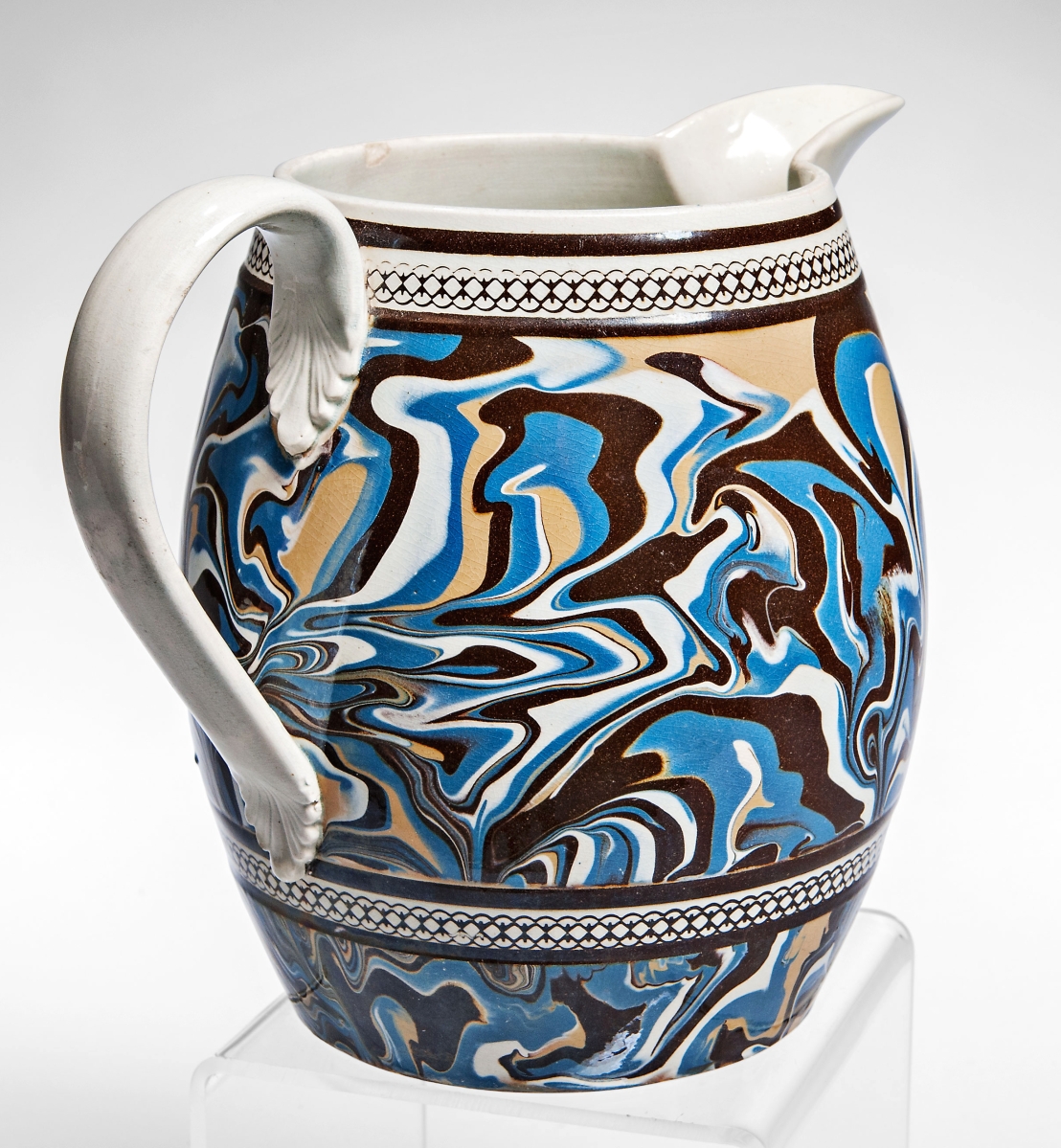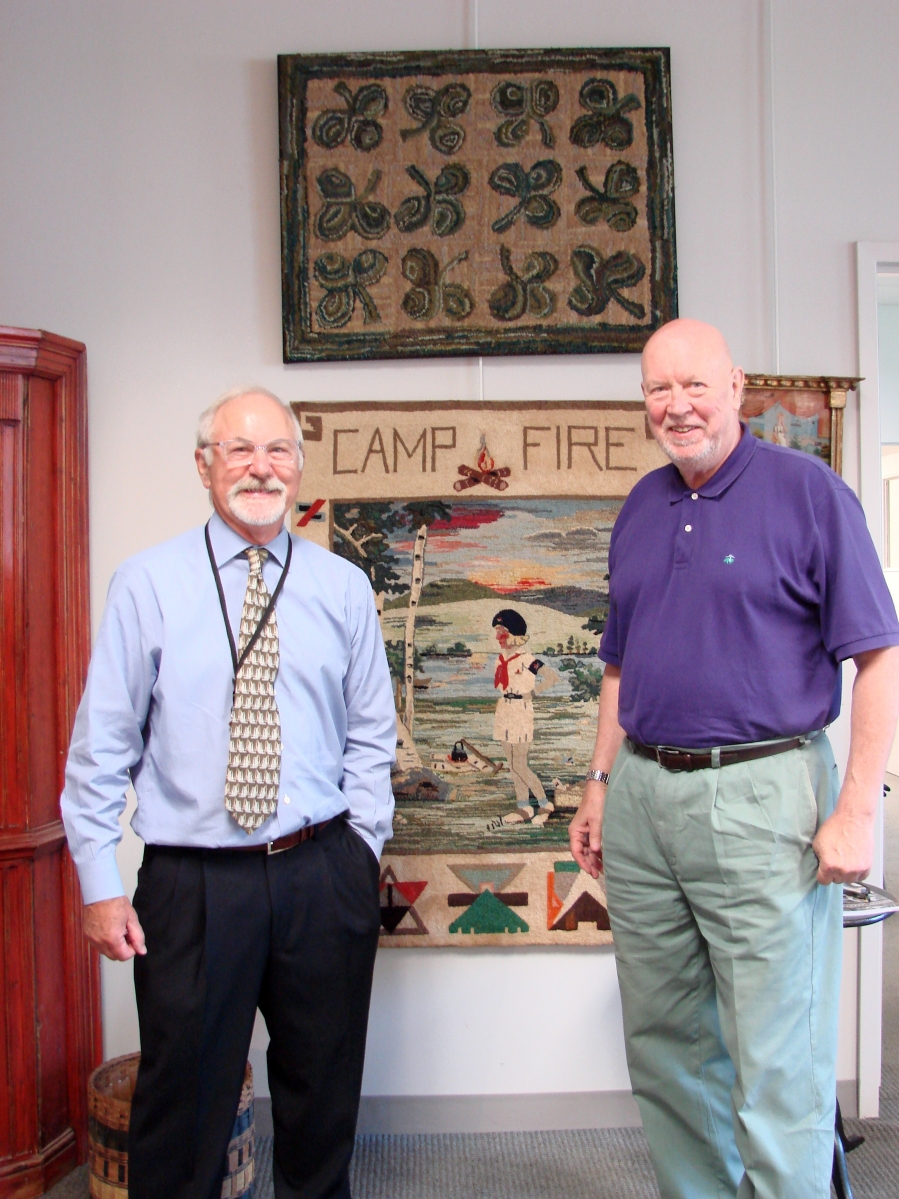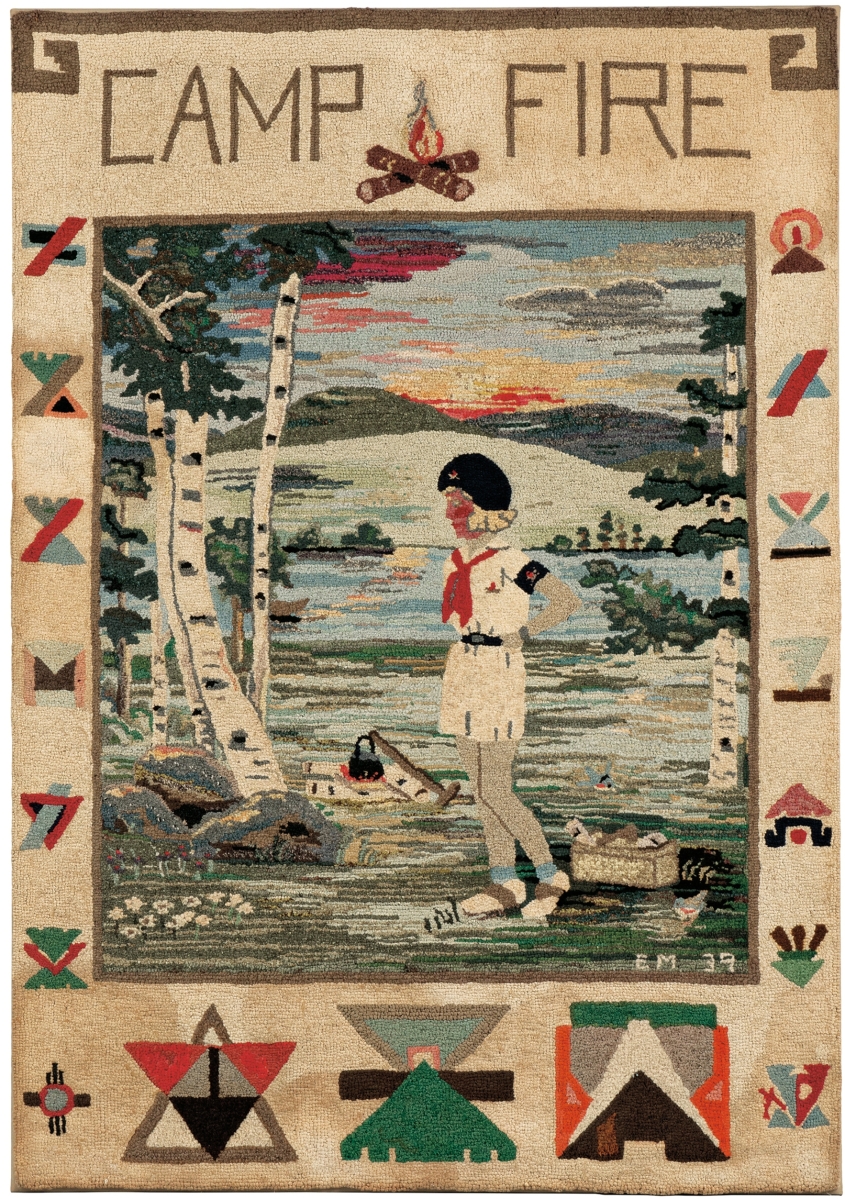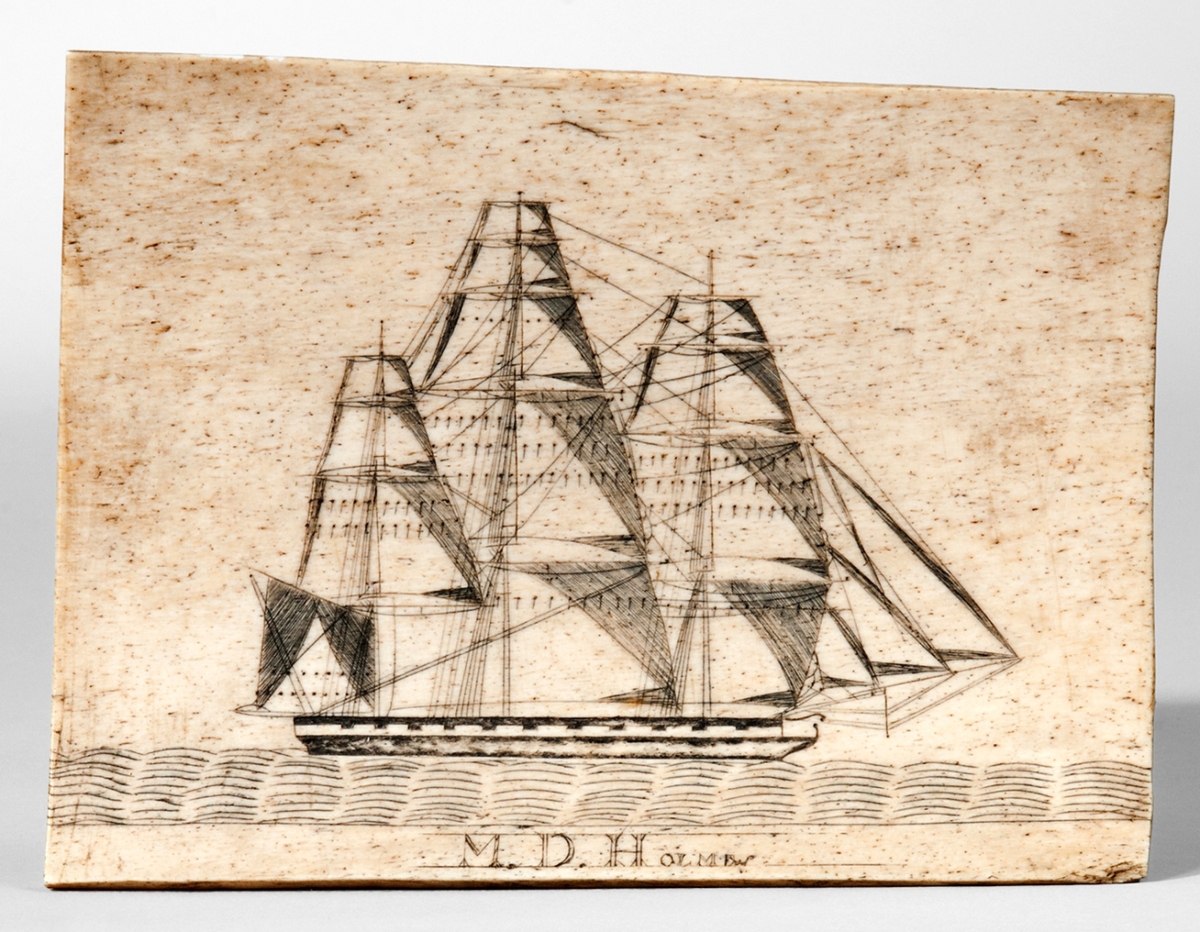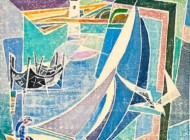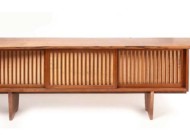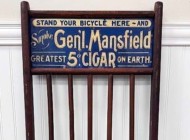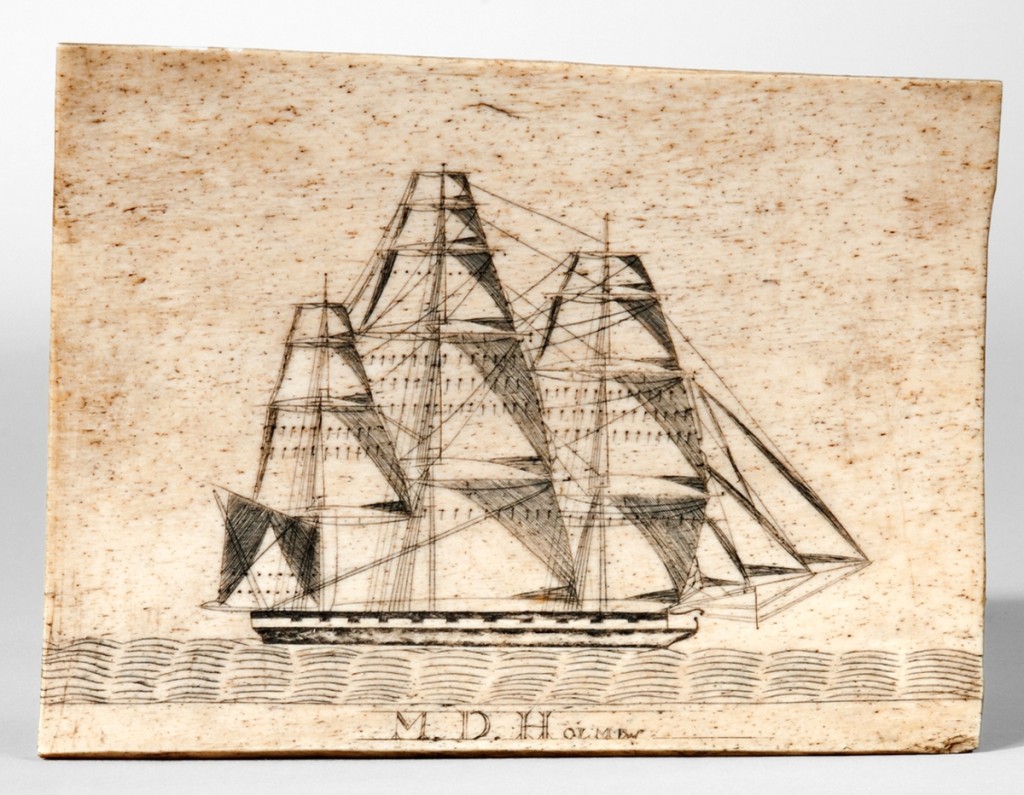
The highest grossing lot of the sale, finishing at $52,275, was a rectangular scrimshawed whale panbone plaque engraved with the name M.D. Holmes. It depicted a fully rigged sailing ship at sea. The exact meaning of M.D. Holmes is not known at this time as there does not appear to have been a whale ship or a ship’s master with that name.
Review and Onsite Photos by Rick Russack, Catalog Photos Courtesy of Skinner
MARLBOROUGH, MASS. – Skinner’s August 13 Americana sale, which grossed $1,316,152, was topped by a whale panbone plaque that brought $52,275. The sale, which included material from three major private collections – Jonathan Rickard, Jim and Pam Alexander and Peter Carswell – was strong throughout. Folk paintings did well, as did weathervanes, while some early furniture drew strong interest. Textiles, which included a William Henry Harrison campaign banner and a flame-stitch wallet with figures of African American women did well and painted smalls were popular.
The scrimshaw selection included several walking sticks from a private collection, crimpers and teeth. The highest grossing lot was rectangular scrimshawed whale panbone plaque engraved “M.D. Holmes.” It depicted a fully rigged sailing ship at sea. Proper identification of M.D. Holmes is as yet unknown. Standard references on American off-shore whaling list neither a whale ship nor a ship’s master by that name. It far exceeded its high estimate of $3,000.
Whalebone walking sticks, especially those with carved fists, did well. In particular, one stick with a fist grasping a dark hardwood baton sold for $6,150. Its buyer, marine arts specialist Andrew Jacobson, bidding for a client, took three or four other sticks with carved fists. He paid $3,998 for a stick with a fluted and spiral carved shaft and $3,444 for one with a round metal plate, engraved “The/ Bishop/of Norfolk/St.” An unusual scrimshawed whalebone stitching frame with a needlework sampler earned $8,303, and a scrimshawed baleen busk with a ship, fouled anchor and American flag reached $6,150.
A few days after the sale, Jacobson was asked about the state of the scrimshaw market. “Given the results of scrimshaw auctions this summer, I’d have to say the market is robust and healthy. We’ve seen several exceptional pieces bringing six-figure prices and the market has easily absorbed hundreds of pieces,” he said.
Jonathan Rickard Collection
The sale began with 39 lots of mocha from the collection of Jonathan Rickard, well-known for his book on the subject, and his own collection of mocha began more than 45 years ago. At one time, it numbered 600-plus pieces. Although health conditions dictated this sale, he still has more than 100 pieces.
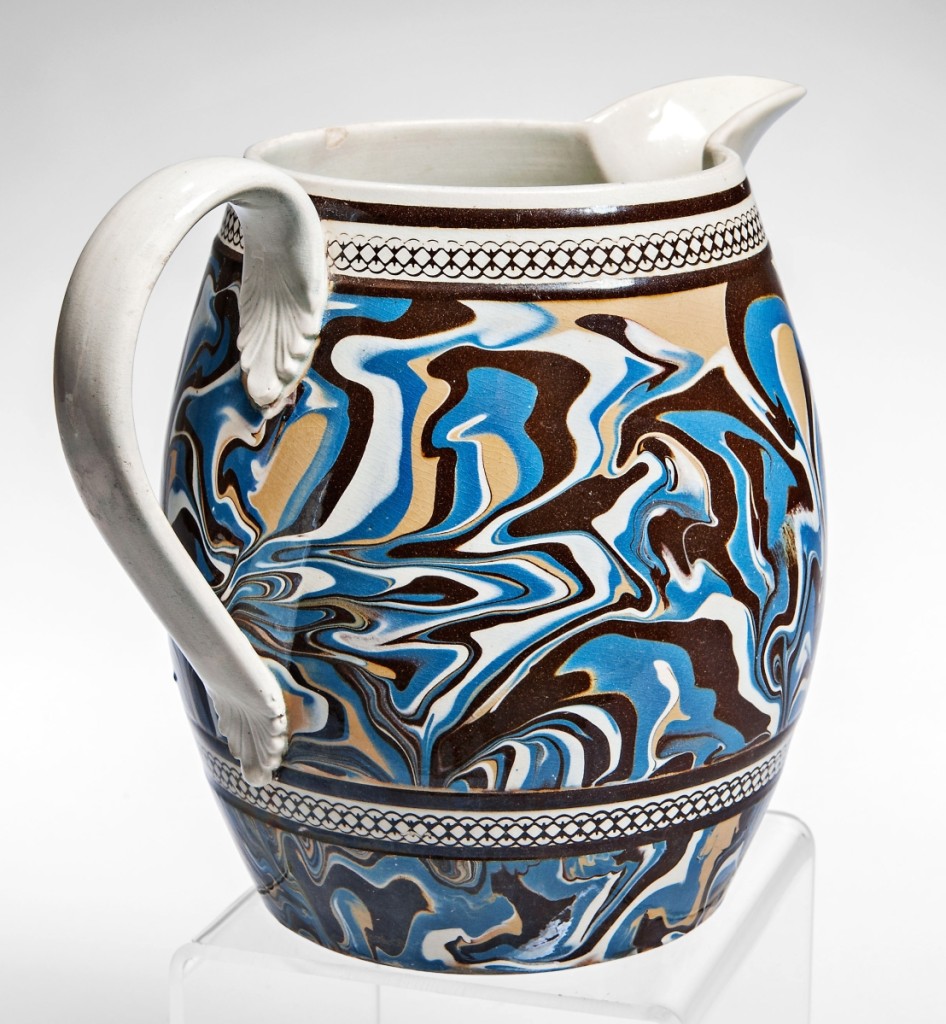
The sale started with mocha from the Jonathan Rickard collection, and this was the most popular piece. The 9-inch slip-marbled pearlware jug, circa 1800, was predominately blue with swirls of brown, yellow and white. It realized $8,610.
The evening before the sale, Rickard gave a well-attended talk on different types of mocha and how they were made. Several of the pieces he illustrated were included in the sale. Bringing the highest price was a handsome slip-marbled pearlware jug, circa 1800. The predominant color was blue, swirled with browns and yellows. It realized $8,610. Also doing well, $3,444, was a circa 1775 marbled and combed slip-decorated jug with chinoiserie embellishments. Several pieces sold well under $500 and Rickard said that as he was selecting the items for this sale, he deliberately included examples of different forms and types of decoration.
When asked about his favorite piece of mocha, he said, “It was a jug we nicknamed ‘Big Bubba.'” It was huge, and when I bought it at Skinner in 1989 for $6,000, it was a record as the highest price paid for a piece of mocha. It also set a record when I sold it, again at Skinner, in 2001, when it brought $50,400. The market changed, and in 2015 it sold at Northeast, as part of the Blum collection, for around $25,000. But to me, even more important than the pots were the people I met and the friends that I made along the way. That really enriched my life.”
Pam and James Alexander Collection
In 1965, on their way home from their honeymoon, the Alexanders bought their first antique – a round oak table. That table is still in the family today. They are downsizing now, and about 100 items from their collections were in this sale. They were knowledgeable collectors who observed carefully, listened to other collectors and the dealers they bought from, and amassed an impressive reference library, which they really used.
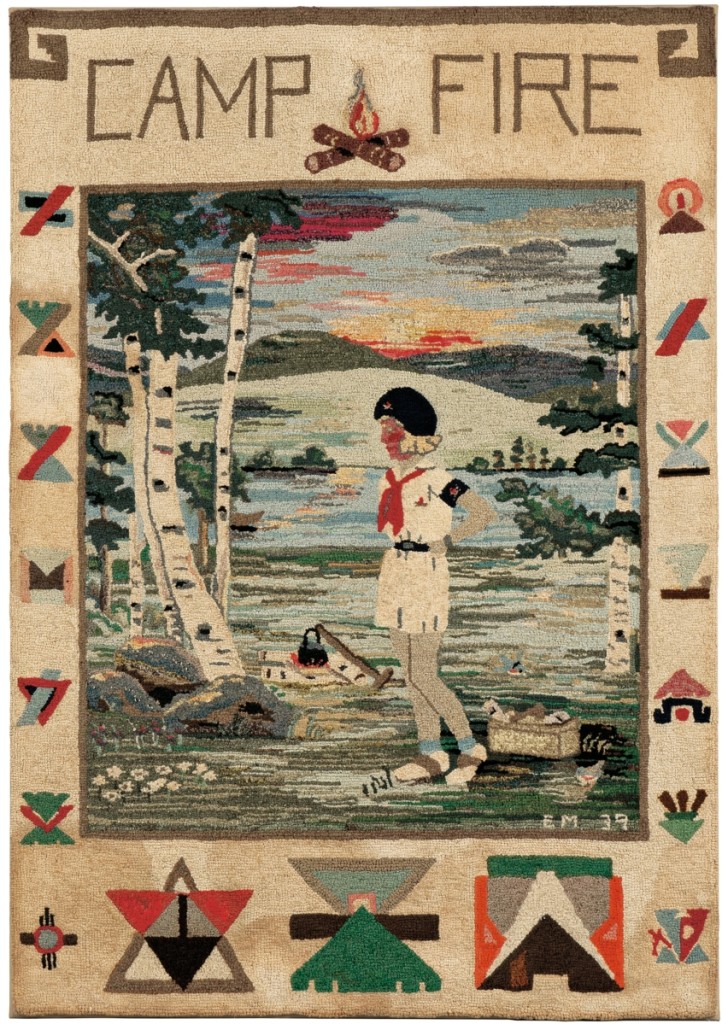
From the Pam and Jim Alexander collection, this bright pictorial hooked rug almost didn’t make it to the auction. It was Pam’s favorite item, perhaps because she was a Camp Fire girl, and she agreed only at the last minute to part with it. Bidders liked it, too, as it went for $1,968.
Jim Alexander said, “We began to collect seriously in 1994, when our youngest of four daughters graduated from college. With that expense behind us, we had some extra money. One of the first things we wanted was a table to replace the oak table. We saw a table that we liked at Ken Tuttle’s shop in Maine but he wanted $4,500 for it. I couldn’t do it. He gave us a Polaroid of the table and a copy of Albert Sack’s Good, Better, Best book, which I studied, but it took me a few months to convince myself to buy that table. Never been sorry.
“We eventually moved to New York where we went to sales at Christie’s and Sotheby’s, and we visited numerous dealers and took classes. We both have to agree on an object before we’ll buy it and it works well. Pam sees things I don’t see and it works both ways. She loves color and I’m interested in construction details. You could say we’ve enabled each other.”
The collaboration worked well. Probably Pam’s favorite item, and one she almost did not let go, was a colorful hooked rug titled “Camp Fire,” dated 1939. It depicted a Camp Fire girl beside a lake with birch trees and American Indian symbols. It sold well at $1,968. Perhaps Pam liked it because she was a Camp Fire girl herself. Another of Pam’s favorites was a colorful painted silk and needlework picture depicting “Jeptha’s Rash Vow,” done at Misses Pattens’ School, Hartford, Conn., circa 1810. It brought $7,995. One of Jim’s favorite objects was the bannerette weathervane on a copper base, $3,690. “We’re pretty sure we know exactly where it came from in Wilton, Maine.”
Jim also favored a circa 1760 Newport carved mahogany side chair, $4,920. An identical chair is in Henry Francis DuPont’s bedroom at Winterthur. He also liked a circa 1790 Newburyport tilt top tea table that took $4,613. Their collection also included a late Eighteenth Century, carved maple and tiger maple high chest of drawers, attributed to the Dunlap school of cabinetmakers that brought $4,920.
Peter Carswell Collection
Carswell started in the antiques business in 1968, and in the late 1970s spent weekends and vacations, “knocking on doors” all around New England. By 1980 he was in the business full time, developing what he called “a pure wholesale trade, allowing me to buy and sell virtually every day. I developed numerous friendships with the dealers who always bought ‘the good, the bad and the ugly.’ Several items in this sale were ones that many wanted to buy over the years, but which always remained with Carswell. One such piece was a Massachusetts inlaid lolling chair, circa 1800, with turned legs and original surface. It sold for $10,455 to a phone bidder. A dealer in the room said, “That’s the sort of price those chairs used to bring. Some of us often tried to buy that chair from him but he always wanted too much money for it.”
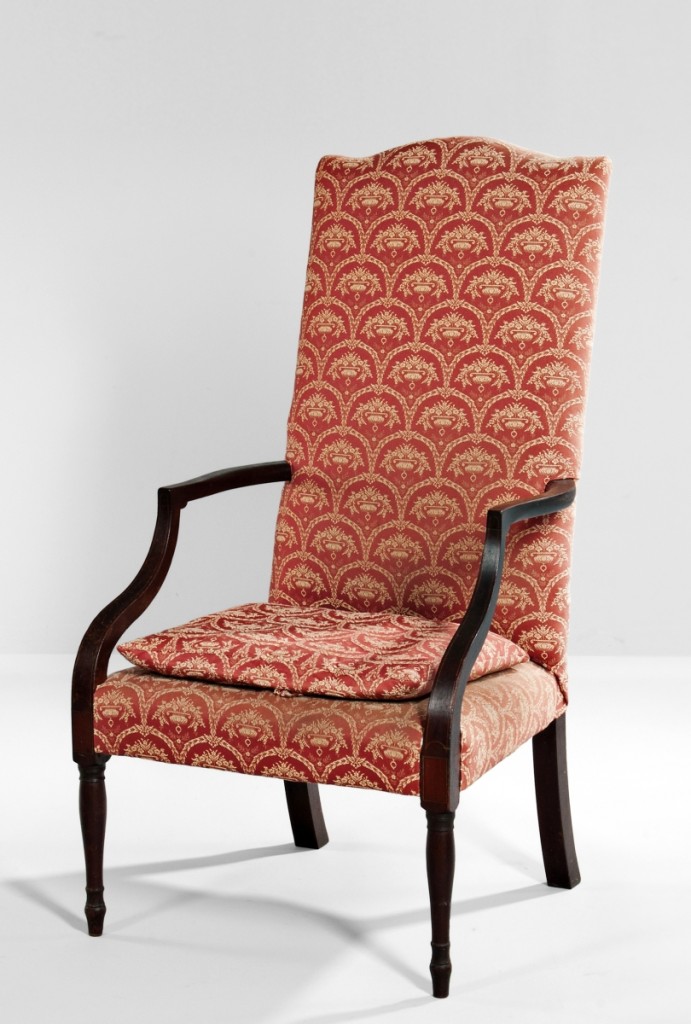
“It brought the kind of money these chairs used to bring.” So said a dealer in the room as this circa 1800 North Shore lolling chair sold for $10,455, more than five times the estimate. It was from the Peter Carswell collection.
Selling for six times the estimate at $7,380 was a black painted candlestand with an elaborately turned post and pendant, perhaps from Maine, perhaps late Seventeenth Century. Carswell said, “It’s probably the oldest thing I own.” Another early piece, a red painted, fan-carved maple high chest, circa 1740-60, had a surface that could have defined “old original surface.” The pulls were replaced but that did not seem to bother anybody as it sold for $7,995.
One of the surprises of this collection was the $7,995 achieved by a 96-inch-square deep red woven coverlet, late Eighteenth-early Nineteenth Century. Carswell owned a pair of paintings by Frank Henry Shapleigh, best known for his White Mountains landscapes. One of the paintings was identified as the Lewis W. Nute farm in Milton, N.H. It showed a dirt road bordered by stone walls, with a figure, a cow and a house and barns. The other was identified as a view from the same farm, as though Shapleigh had just turned around and painted the landscape he saw. The one with the house and barns sold for $15,990, and the landscape went for $3,690. These are unusual subjects for Shapleigh, and Carswell was asked about them. Proving that it is, indeed, a small world, he said, “My family is from Milton, and my father installed the plumbing in that house. When I had the chance to buy the pair, I was really excited to get them.” Both sold to the same phone bidder, so hopefully they will remain together.
These three collections comprised only about 200 of the 600-plus lots offered. There were plenty of other special objects, some bringing prices that surprised many. A lot of six contiguous wallpaper panels with a panoramic view of Niagara Falls by Zuber et Cie., France, mid-Twentieth Century, and 23 matching plain blue sheets, earned $8,610, well above estimate. Also performing well was a flame-stitch wallet depicting African American figures. It was probably from Massachusetts, mid-Eighteenth Century, and brought $34,440.
Of the two late Eighteenth Century fire screens, or “dummy boards,” as they were often called, on offer, one was a figure of an Elizabethan woman dressed in a long red and silver gown with wide neck ruffle, 47 by 28 inches, fetching $3,567. There were two Goddess of Liberty weathervanes. One by Cushing and White sold for $24,600, and the other by A.L. Jewell & Co sold for $19,680. Both were flattened, full-body examples.
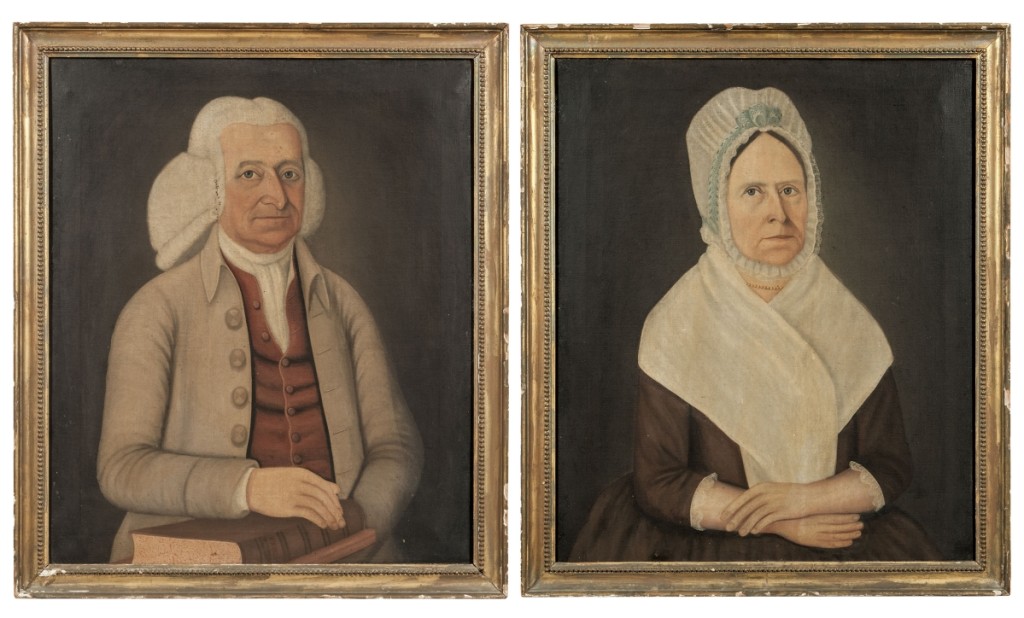
A pair of signed and dated portraits by John Brewster Jr (American, 1766–1854) realized $43,050. They depicted Deacon Benjamin Titcomb (1726–1798) and his wife Anne Pearson Titcomb (1729–1800), and were signed, dated and inscribed “Painted by John Brewster 1798” (on the stretcher of Anne Titcomb’s portrait).
Several painted Shaker boxes did well, including a large red oval covered pantry box at $6,675. A pair of signed and dated portraits by John Brewster Jr realized $43,050.
Finally, some formal furniture performed well. A mahogany and mahogany inlaid card table, probably by Langley Boardman, Portsmouth, N.H., circa 1807, with provenance tying it to an Islington Street mansion, realized $9,840. A Portsmouth mahogany and mahogany inlaid, glazed desk/bookcase, circa 1800-15, earned $3,998. A mid-Eighteenth Century red-painted carved cherry high chest made by Elijah Booth, Woodbury, Conn., achieved $11,070.
Instructively, there was a typical mahogany and mahogany veneer inlaid bowfront chest with an old surface, cataloged as Massachusetts or New Hampshire, early Nineteenth Century. It attracted the attention of Brock Jobe and sold for $738. “The chest struck me as a very early bowfront dating from about 1790 to 1795,” Jobe said. “It was made like a Chippendale chest; the maker was probably moving into the new style but retaining the construction of the previous style. The techniques of construction suggested that the maker was familiar with Boston construction.
“The combination of chevron stringing along with string inlay but no cock beading or scratch bead on the drawers was extremely unusual. I’ve never seen another one like it. Perhaps the maker was experimenting and on later chests always added cock beading. The chest had an old surface that could be lightly cleaned. Whoever bought it, if it’s conserved properly, will end up with a really striking chest. I don’t want to suggest that this was an outstanding aesthetic achievement, but I found it to be intensely intriguing from a furniture geek’s perspective. Given its rather plain appearance, pieces of this sort sometimes fly under the radar and bring little money at auction. Yet they are fascinating to study.”
Steve Fletcher said, “This was a good sale. I think we had more online and phone bidders than we’ve ever had before, I think around 1,000. The online Americana sale added about another $400,000 to the gross, so we’re close to $1.750 million, combined. One of the things I liked best was the 1740-60 paint-decorated side chair, probably from Massachusetts. It was painted in the late Nineteenth Century, and I wondered if it would slip under the radar. I’m glad that it didn’t. Selling for more than $5,200 means that it was appreciated. The Brewsters did well and there was interest in some brown furniture, which we haven’t seen in a while.”
All prices reported include the buyer’s premium. For information, www.skinnerinc.com or 508-970-3200.

